More gardeners are turning towards growing their vegetables in raised beds these days.
Raised beds are defined as elevated areas with improved soil that are often enclosed using sturdy material, according to the University of Maryland.
Every home gardener’s dream is an unlimited supply of fresh, nutritious, and seasonal crops.
Let’s review the best vegetables you can grow in raised beds.
30 + 2 Best Vegetables for Raised Beds
- Lettuce
- Radishes
- Chards
- Onions
- Carrots
- Beans
- Rockets
- Tomatoes
- Patty pans
- Garlic
- Beetroot
- Courgettes
- French beans
- Peas
- The three sisters
- Potatoes
- Mint
- Corn
- Beans
- Cucumber
- Pepper
- Spinach
- Broccoli
- Kale
- Celery
- Cabbage
- Lentils
- Leek
- Cauliflower
- Asparagus
- Squash
- Bok Choi
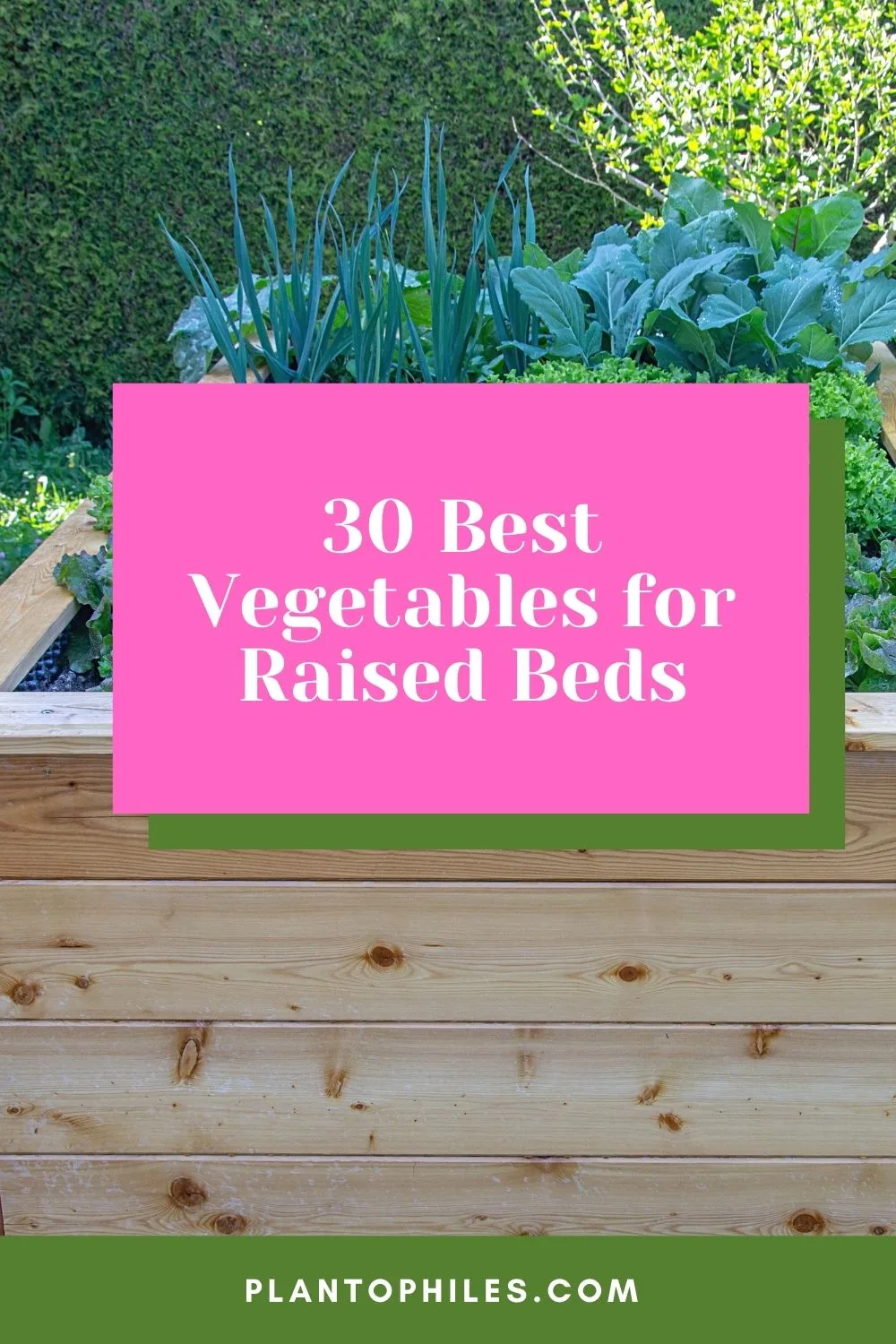
Table of Contents
Best Vegetables for Raised Beds
1. Lettuce
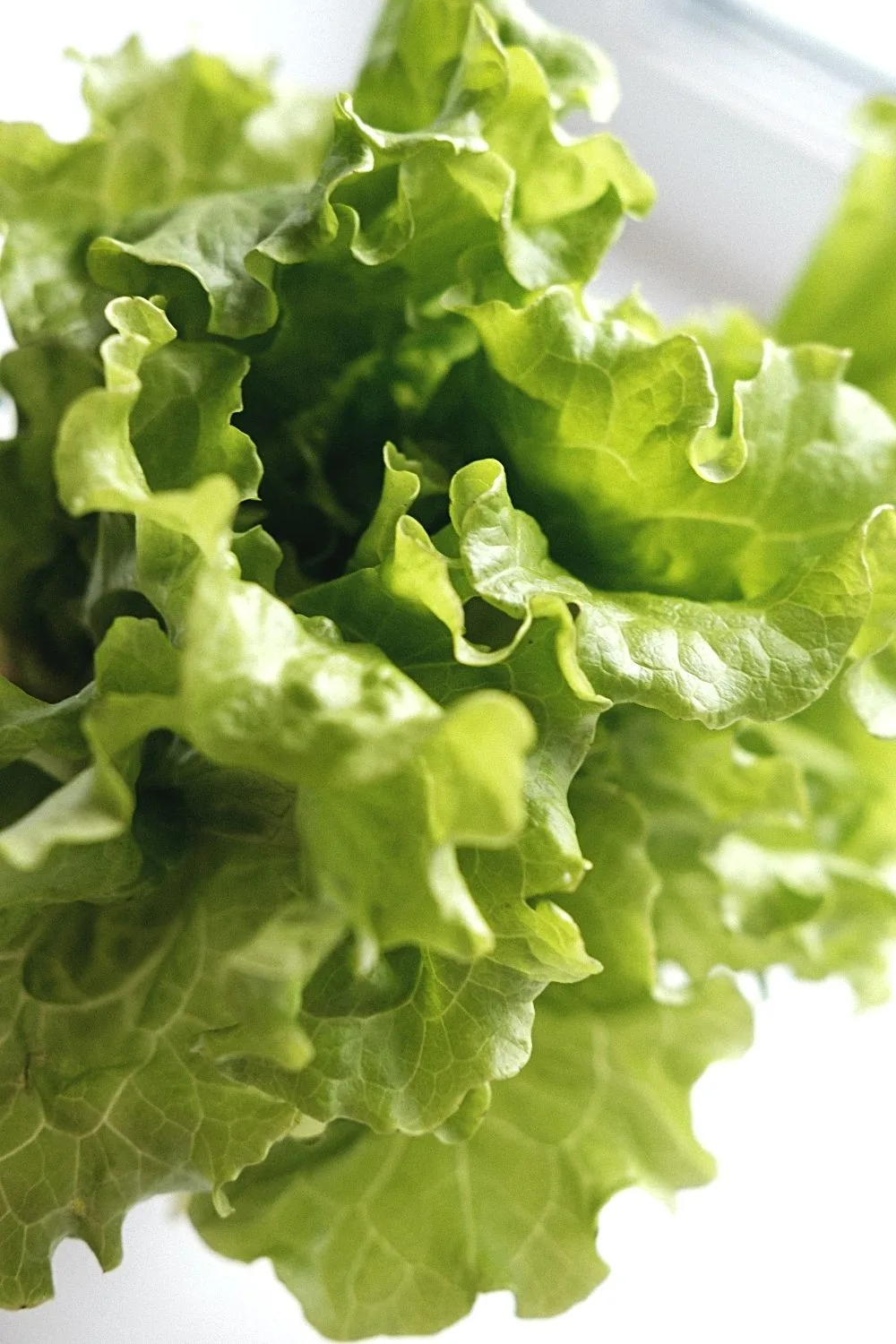
One of the favorite vegetables of all time is lettuce. It is an ingredient without which fast foods like burgers, sandwiches, and salads are incomplete.
To remain healthy and benefit the environment simultaneously, plant lettuce.
It makes great garnishing and flourishes in raised planting beds, allowing other plants to reach the underground nutrients.
However, it is essential to take care of it well while the lettuce plant grows as it needs a considerable amount of fertilizer and water.
Often blooming through spring to fall, its seeds germinate in places whose temperatures reach as low as 40 degrees Fahrenheit (4 degrees Celsius).
Moreover, it likes moist, fertile soils that keep it fresh and hydrated. Plant it at a spot with 6-8 hours of sunlight exposure.
As a plant that does not do well growing in an abundance of weeds, lettuce loves raised beds.
In a raised bed, it is much easier to keep control of weeds. In a conventional garden bed, weed control can be difficult.
The other thing this vegetable loves, provided by a raised bed, is warm soil. With raised beds being a warmer option, you can even sow your lettuce seeds slightly earlier.
This is also possible as lettuces do not mind a short period of cooler weather.
Sowing your seeds earlier means you will be able to keep them going and grow for a little bit longer and later into the season. Warm soil will also assist in speeding up the germination process.
With plenty of varieties, there is a type of lettuce for everyone!
Plant your lettuce seeds right into your raised bed in the early spring days. Keep the soil evenly moist.
You can then expect to harvest your lettuce in just thirty days. This is true for most varieties of lettuce.
For an added benefit, harvest your lettuce first thing in the morning. Doing so is known to preserve the lettuce’s great flavor.
By only picking the leaves you need and not removing the whole head of lettuce, you will likely get more out of your plant.
- Scientific name: Lactuca Sativa
- Light Requirement: moderate to high
- Watering requirements: frequent
- Growth rate: moderate
- Temperature: 60 to 65 degrees Fahrenheit
- pH: 6 to 7
- Height: 6 to 12 inches
- Care: mild to moderate
2. Radishes
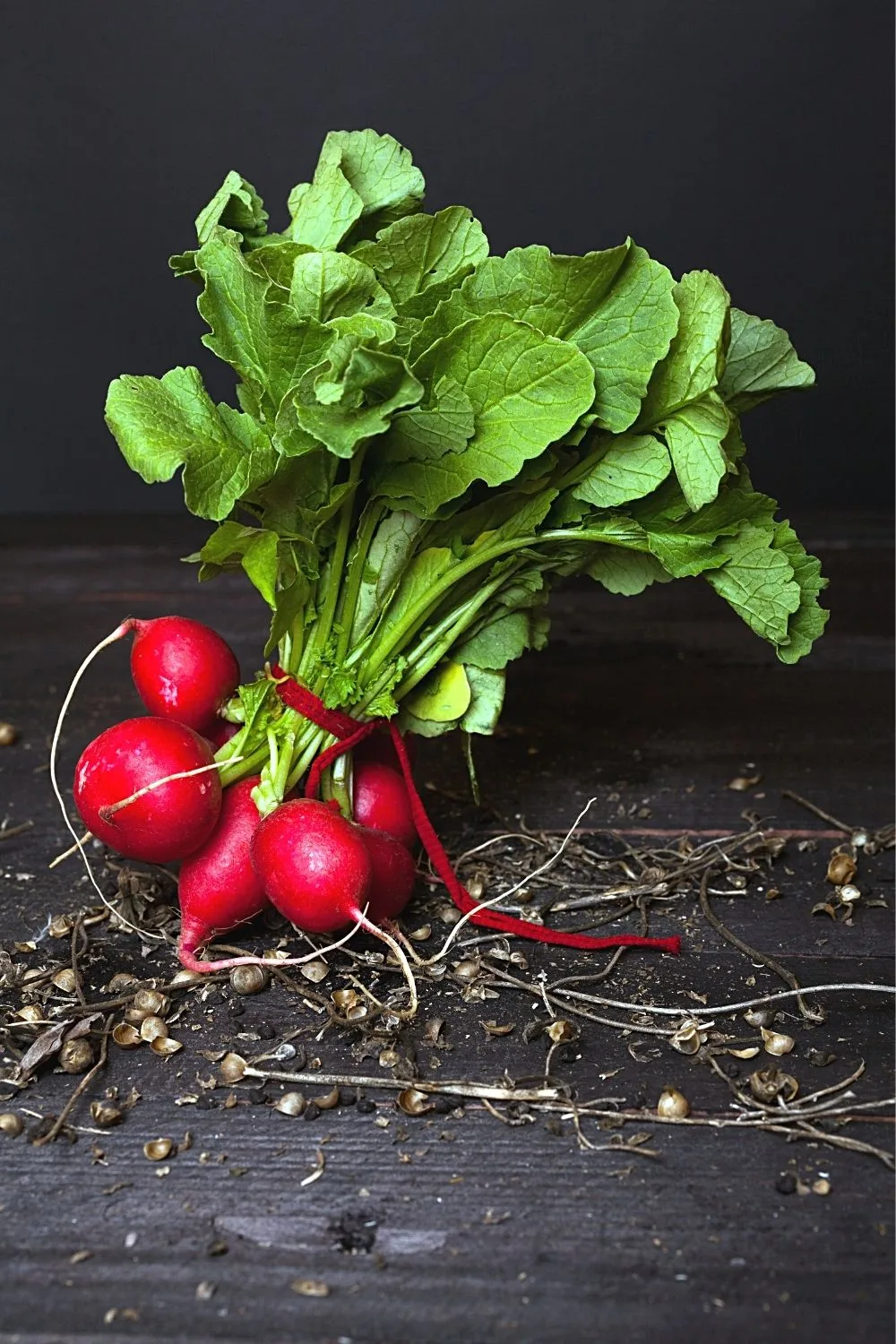
A great addition to your vegetables can be radishes. These fast-growing plants make a good salad add-on and spicy addition to stir-fries.
Caring for radishes is fairly straightforward; however, please ensure you do not expose them to direct sunlight for long hours.
Sow the seeds through March to mid-August for a constant, healthy supply.
Experts also suggest planting them with some spacing, approximately 1 inch (2.5 cm).
If you are a fan of juicy, fat radishes, keep thinning them out every few weeks.
Once planted, except for occasional maintenance, the radish plant doesn’t demand much.
Radishes are not the easiest vegetables to grow. But, much success has been achieved with growing these plants in raised beds.
This is because avoiding all the features that radishes sorely dislike is easy.
To name a few, this vegetable does not like soil that is too rich, nor does it enjoy clay-type soils. Conditions that are too soggy or too dry are also not ideal.
In a raised bed, you can keep the radish’s preferences in mind to create the perfect balance. A well-draining, loamy soil is best.
However, you must ensure it does not get too dry. And because this plant does not have very big roots, they only need a shallow bed.
All three radish varieties can be easily grown in the same raised bed yearly. Cater to their very picky needs, and you will enjoy radishes year-round!
- Scientific name: Raphanus sativus
- Light Requirement: moderate to high
- Watering requirements: frequent
- Growth rate: moderate
- Temperature: 60 to 65 degrees Fahrenheit
- pH: 6.5 to 7
- Height: 6 to 18 inches
- Care: mild to moderate
3. Chards
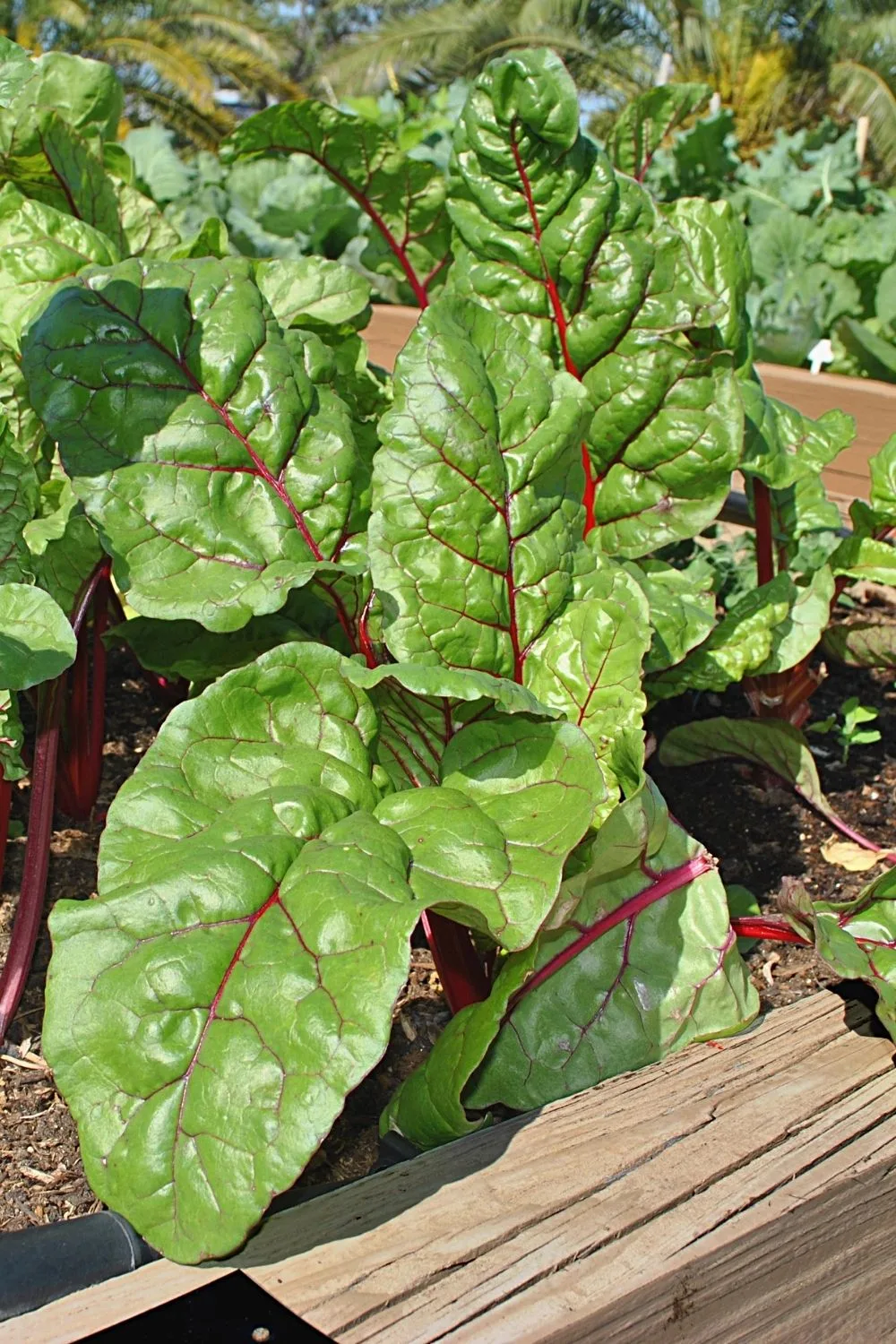
Chard, also known as leaf beet, is another vegetable that does well in raised planting beds.
An excellent choice for beginners and experts, the chard plant comes in various gorgeous colors, including creamy white, pink, purple, and yellow. Besides its aesthetic value, chard is a delicious side of main meals.
When growing chards, pick a spot with plenty of sunlight and aeration. The plant favors rich, moist, and organic soils with good drainage. Plant its seeds in April through August in spacey drills, treating them as cut-and-come crops.
- Scientific name: Beta vulgaris subsp. vulgaris
- Light Requirement: moderate to high
- Watering requirements: frequent
- Growth rate: moderate
- Temperature: 60 to 65 Fahrenheit
- pH: 6 to 6.4
- Height: 8 to 24 inches
- Care: mild to moderate
4. Onions
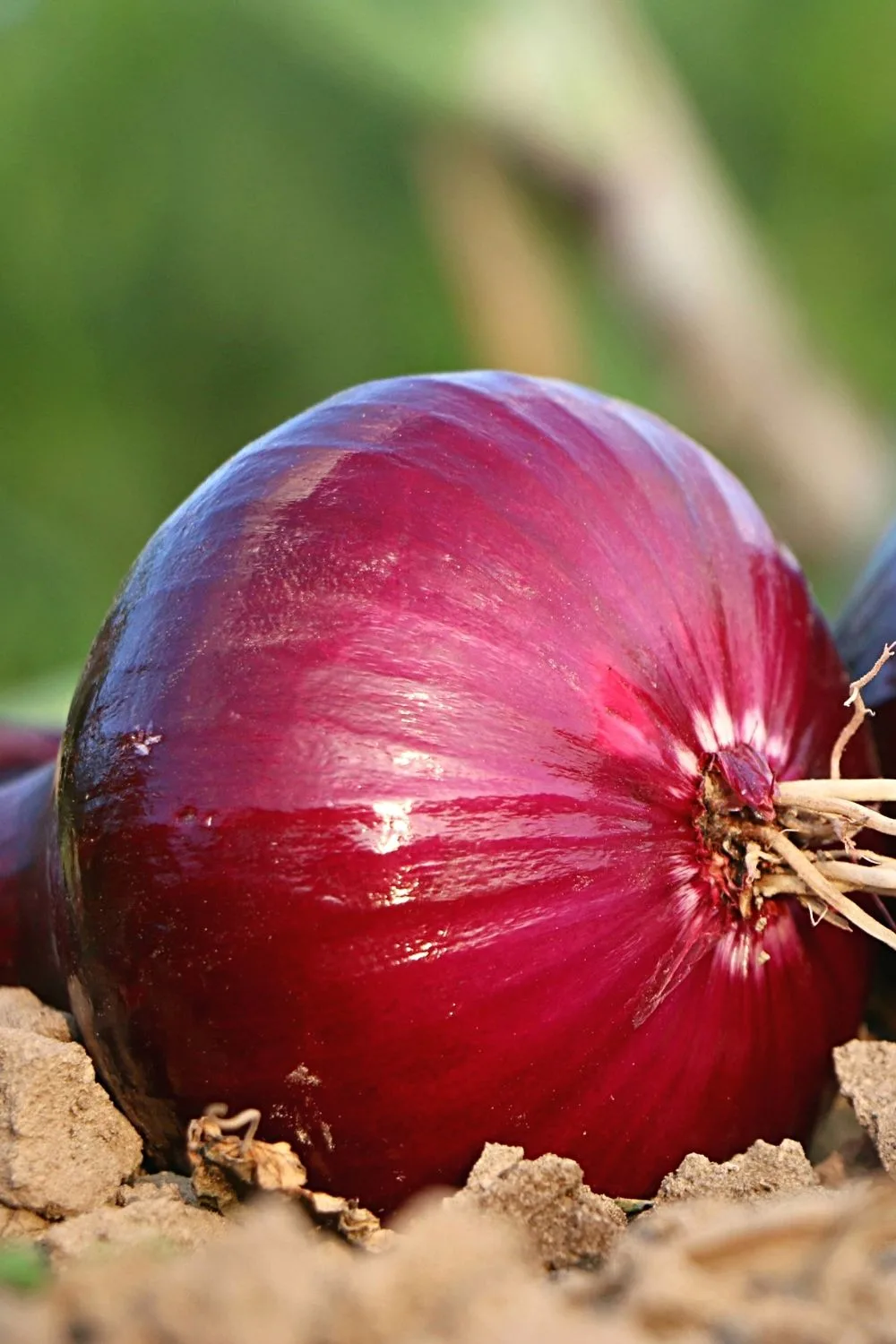
Onions can do a lot more than just make you cry. They may not sound exciting but grow well in the raised garden bed.
An undeniable fact is that onions make a significant ingredient in countless meals; burgers, sandwiches, BBQ, and even pickles.
If you grow onions, you’ll find various ways to use them. Apart from raising planting beds, you can find plenty of other ways to put them to use.
Experts think that though onions grow well in raised beds, they need ample space above and below to thrive since the roots need this space entirely.
Onions are not demanding.
They require soil that is well-draining as well as enriched. These two things are easy to provide in raised beds.
The raised bed already provides good drainage. All you need is to create a well-enriched soil mix!
You could also use a store-bought, good-quality soil mix.
This vegetable does prefer fertile soil. You can easily enrich your soil with fertilizer or even fresh compost.
It is best to plant your onion seeds early. These vegetables can often take more than one hundred days to mature.
The best time to start growing your onions is early in the spring. You should start planting this plant indoors and only transplant them after the last frost date.
If the roots have insufficient space, they undergo root rot, or the plant ceases to mature.
- Scientific name: Allium sepa
- Light Requirement: moderate to high
- Watering requirements: moderate
- Growth rate: moderate
- Temperature: 55 to 75 degrees Fahrenheit
- pH: 5.3 to 5.8
- Height: 6 to 12 inches
- Care: mild to moderate
5. Carrots
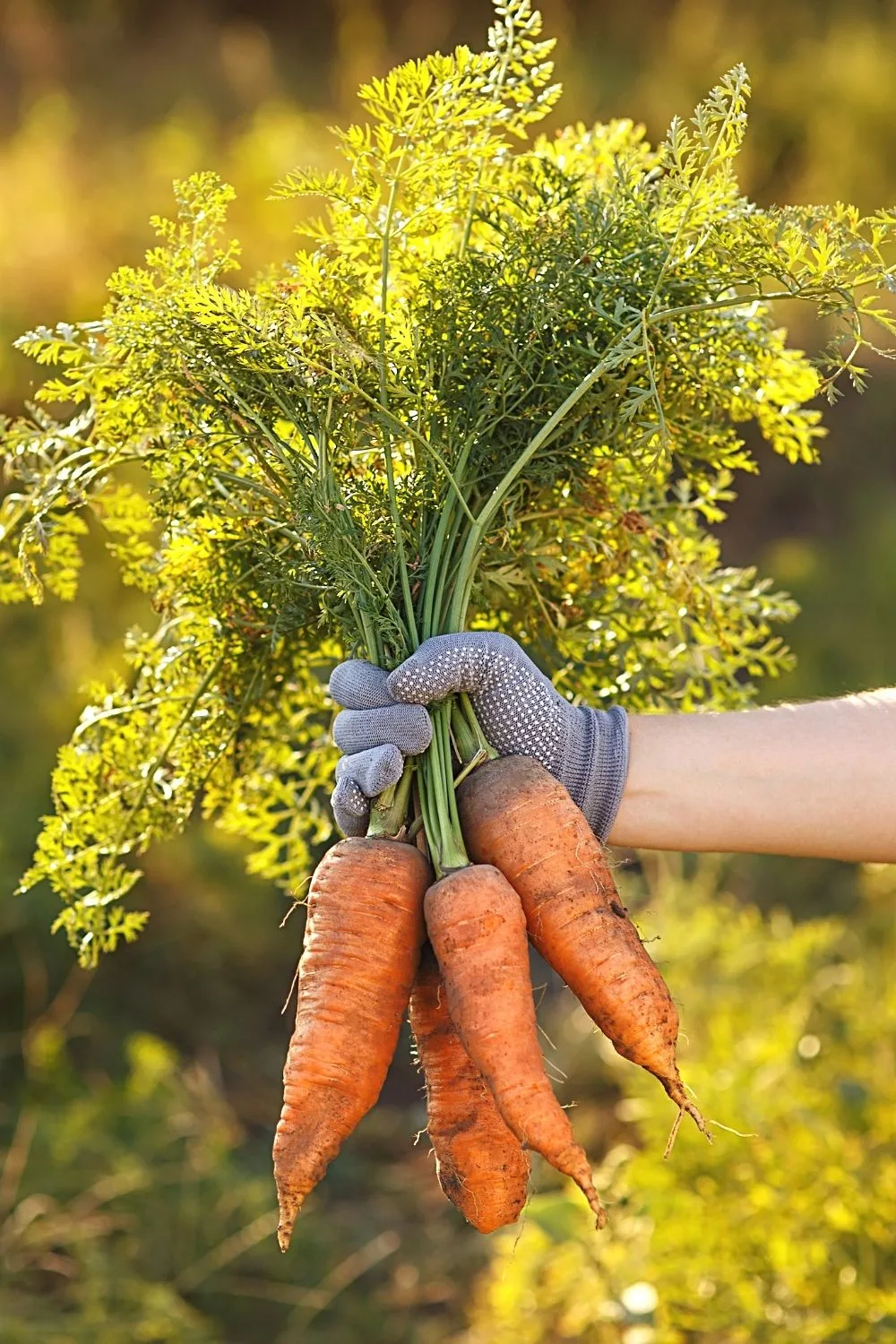
A delicious and sweet homegrown vegetable is carrots. While they may require some work to grow, homegrown carrots are more flavorful and fresher than commercial ones.
You don’t only have to grow orange carrots; try white, yellow, or even purple to make your dishes and salads look more colorful and delicious.
Growing carrots can be a nightmare if you have stony or compacted soil, leading to ‘forking.’
However, carrots grow healthier and more nutritious when planted in a raised bed.
Water them about an inch weekly and place them in six to eight hours of sunlight daily for optimal growth.
A big problem when growing this yummy vegetable is carrot fly. These insects grow close to the ground, leading to frequent attacks and lesser yield.
Therefore, growing carrots in raised beds is brilliant as it deters these bugs.
Thriving in loose, moist soil makes carrots the next best vegetable to grow in a raised bed.
The loosely packed soil in a raised bed makes for the perfect environment for carrot tubers to grow. Carrots do exceptionally well.
This vegetable’s growth is often stunted due to compacted soil. Compacted soil leaves no room for the carrot tubers to expand and grow.
Carrots are less likely to develop knobs when grown in a raised bed.
Knobs often occur in the more conventional style of garden beds. Carrots without knobs are much easier to harvest.
The variety of carrots you choose to plant will affect the type of raised garden bed you should prepare.
Long-growing varieties of carrots will need a deeper bed. Whereas smaller and shorter carrot varieties, like the French carrot variety, will only need a low and fairly short bed.
- Scientific name: Daucus carota
- Light Requirement: moderate to high
- Watering requirements: infrequent
- Growth rate: moderate
- Temperature: 55 to 75 degrees Fahrenheit
- pH: 6 to 7
- Height: 6 to 12 inches
- Care: mild to moderate
6. Beans
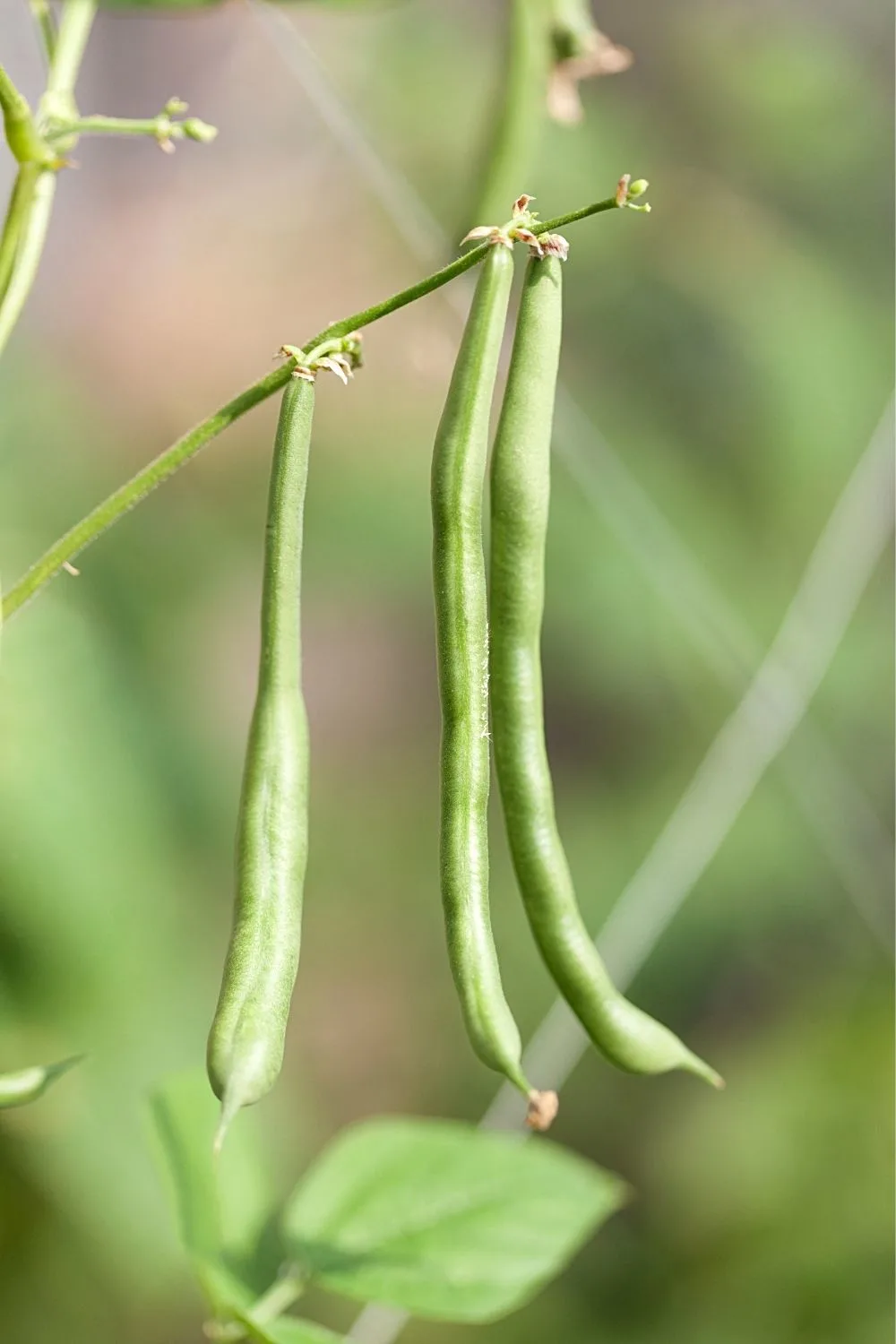
Another easy-growing and rewarding plant is bush beans. This vegetable is a highly nutritious crop, containing vital macro and micronutrients, such as Vitamin A and Vitamin C.
Therefore, adding them to your diet will benefit you.
Bush beans may be a little extra effort since new plants have to be sowed every month all year until the first frost.
Another speedy grower, green beans are known only to take around two months to mature.
This is true for green bean plants that you started growing from seeds. However, the green bean is not the only variety that can be grown in a raised garden bed.
Other varieties of beans suitable for growing in raised beds include:
- Blue Lake Bush beans
- Mascotte beans
- Dragon Tongue beans
- Yellow beans
- Purple beans and
- Red beans
All of the bean varieties make deep deposits of nitrogen into the soil they are grown in. This makes them ideal vegetables to grow with other plants that feed heavily on nitrogen.
Heavy nitrogen-feeding plants include cabbage and broccoli.
Green beans, along with the other bean varieties, prefer warm weather. Thus, they should be planted after the last frost.
When you sow your bean seeds in rows, you should space them.
Space the rows about 18 inches (46cm) apart. The seedlings in each row should be spaced around 2 inches (5cm) apart.
Sow the plant in light shade during summer and moisten the ground.
- Scientific name: Phaseolus vulgaris
- Light Requirement: moderate
- Watering requirements: mild to moderate
- Growth rate: moderate
- Temperature: 55 to 65 degrees Fahrenheit
- pH: 6 to 7
- Height: 24 inches
- Care: mild to moderate
7. Rocket
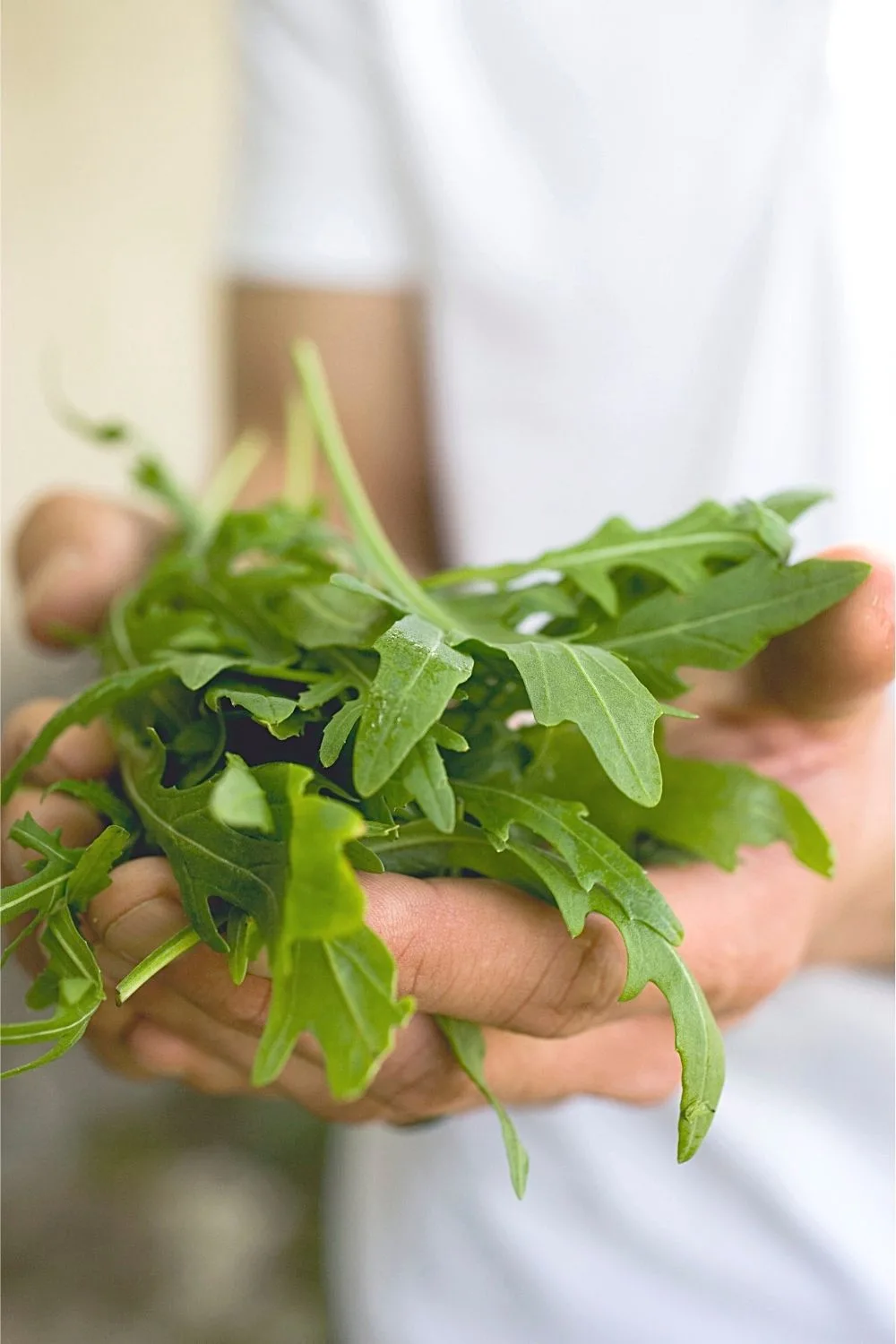
You can grow a rocket in your garden, as shocking as it may sound. It’s a plant, not a travel vessel; that’s the only difference.
Rockets make great raised-bed plants and offer a peppery hit in all the dishes it’s added to.
A quick and easy plant to grow, a rocket only needs rich soils with frequent watering and a well-draining spot. Additionally, ensure that it receives considerable sunlight.
If you sow rocket seeds directly into the ground, thin out the plants for healthier growth.
- Scientific name: Eruca sativa
- Light Requirement: moderate to high
- Watering requirements: moderate to high
- Growth rate: moderate
- Temperature: 60 to 65 degrees Fahrenheit
- pH: 6 to 7
- Height: 12 to 36 inches
- Care: mild to moderate
8. Tomatoes
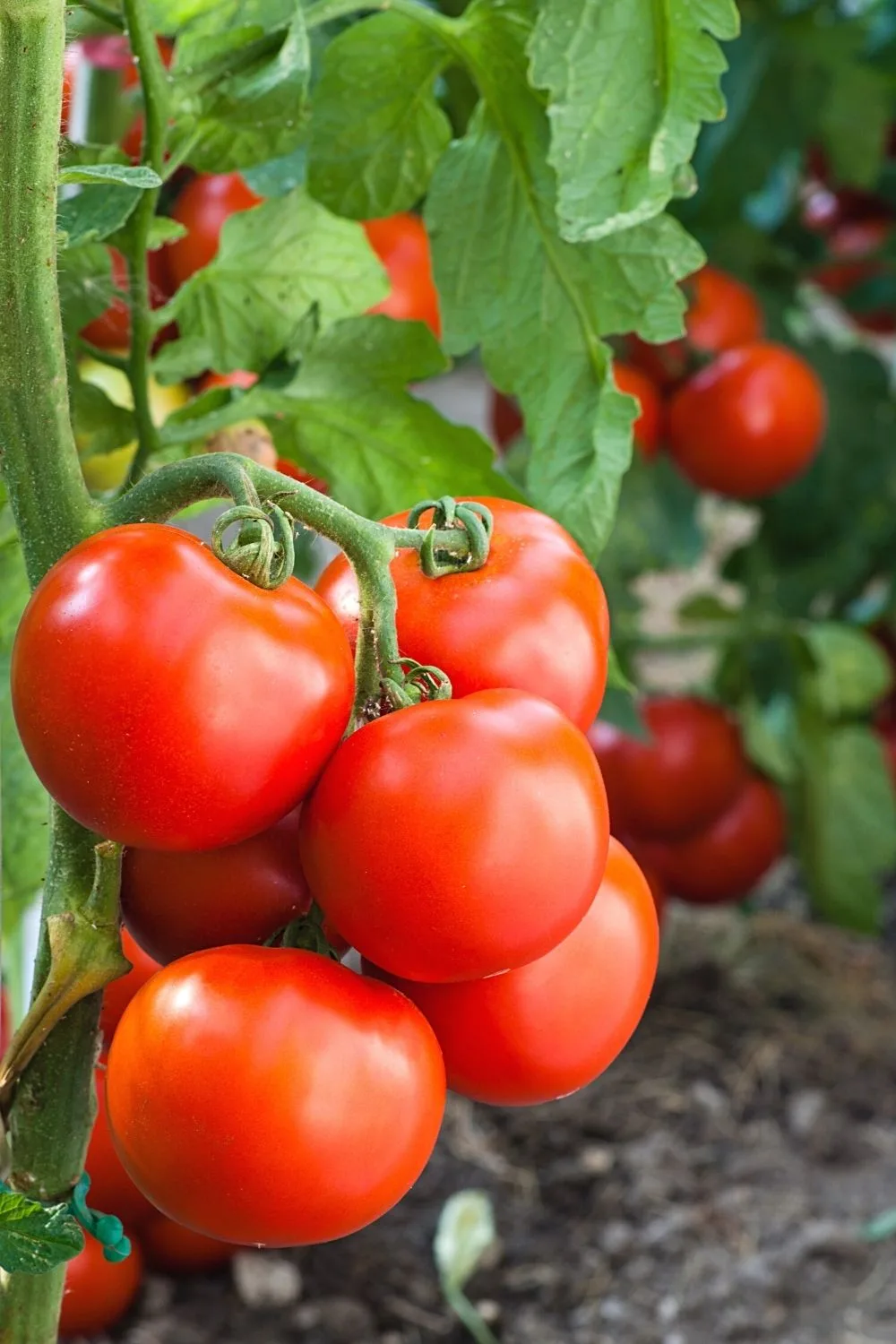
Tomatoes are one of the most delicious vegetables to grow on raised beds. Tomatoes are an excellent addition to salads as well as Mediterranean cuisine.
You don’t need to put them in deep soils as their roots grow horizontally. However, planting tomatoes in adequate space is a must.
Grow your tomatoes in rich, nutritious soil to make them juicy and healthy.
This vegetable has an intense need for fertile and deep soil.
Tomatoes are heavy feeders with incomparable growing speeds. But they love growing in raised beds.
In a raised bed, you can control how much and what nutrients your tomato plant gets.
The other thing you will need to supply your tomato plant with is a stake. These plants need some support structure to twine around and grow on.
The stake or other support structure is most importantly used to support the weight of the plant’s growing tomatoes.
You must loosely tie your maturing tomato plant to the support structure. This is only necessary until the plant has grown around the support structure.
The best types of tomato plants to grow in raised beds are ones that ripen quickly.
Types that can produce high yields while being limited to space are ideal. One type of tomato plant that is especially popular is the Cherry tomato plant.
Cherry tomato plants typically stay quite compact. These plants also produce an abundance of little tomatoes in just one season!
- Scientific name: Solanum Lycopersicum
- Light Requirement: moderate to high
- Watering requirements: frequent
- Growth rate: moderate
- Temperature: 55 to 85 degrees Fahrenheit
- pH: 5.5 to 7.5
- Height: 8 inches
- Care: mild to moderate
Read about German Queen tomatoes next
9. Patty Pans

Another good option is patty pans when planting raised beds and vegetables. Though a member of the squash family, Patty Pans do not need peeling.
The Patty Pans come in white, yellow, and green shades with a flat and scalloped shape.
One of its most unique varieties is ‘greendisc.’ It has mottled skin with a nutty flavor, hence its popularity.
Patty pans are productive and relatively small plants that are easily manageable.
Initially, they are all mottled but later turn solid green and up to 13.7 inches (35 cm wide).
Harvest this crop from August to October; cook the smaller patty pans like courgettes, and bake the larger ones to prepare a healthy dinner.
Plant them in ample sunlight, well-draining and moist soils, and water every other day.
After all the frost has cleared in clusters of three thinned put at 24 inches, sow the seeds.
- Scientific name: Cucurbita pepo
- Light Requirement: moderate to high
- Watering requirements: infrequent
- Growth rate: moderate
- Temperature: 65 degrees Fahrenheit
- pH: 6 to 7
- Height: 24 inches
- Care: mild to moderate
10. Garlic
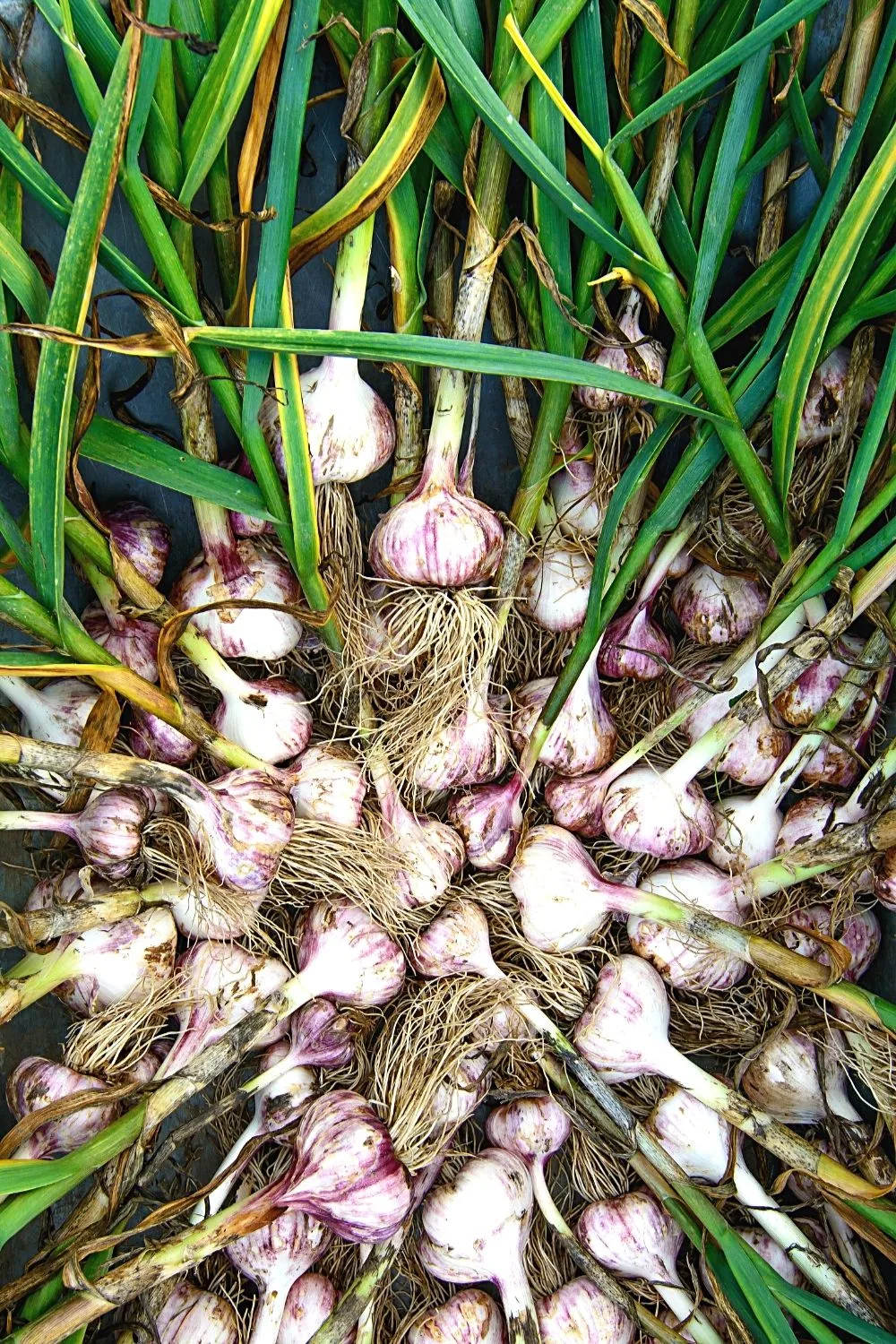
The mention of garlic may seem far-fetched. This vegetable is not thought to be one of the easiest to grow.
Although it may be tricky to grow typically, it is a breeze when grown in a raised bed.
Garlic has very specific needs. These needs can be almost painless to meet with the help of a raised garden bed.
Remember, when planting garlic, you should open up the bulb and break it apart.
Plant each clove individually with their point end facing up.
To start their process of growing, the cloves require a period of cold. Therefore, it is best to plant your garlic in November, depending on your location.
Give your garlic cloves time to grow; they should be ready to harvest in the spring. You can expect your individual cloves to have matured into chubby new bulbs.
Garlic is considered one of the most versatile vegetables out there. With this one crop, you can make Asian and Mediterranean food.
Garlicky mushrooms, garlic bread, and garlic butter over steak are other favorite uses of garlic.
This vegetable is tricky to grow in an open garden; therefore, plant it in raised beds only, ensuring the temperatures are compatible.
Break open the bulb of mature garlic and separate the cloves; grow each individually with the pointy end up.
For healthy growth, sow garlic in November.
- Scientific name: Allium sativum
- Light Requirement: moderate to high
- Watering requirements: infrequent
- Growth rate: moderate
- Temperature: 45 to 50 degrees Fahrenheit
- pH: 6 to 7
- Height: 23.6 inches
- Care: mild to moderate
11. Beetroot
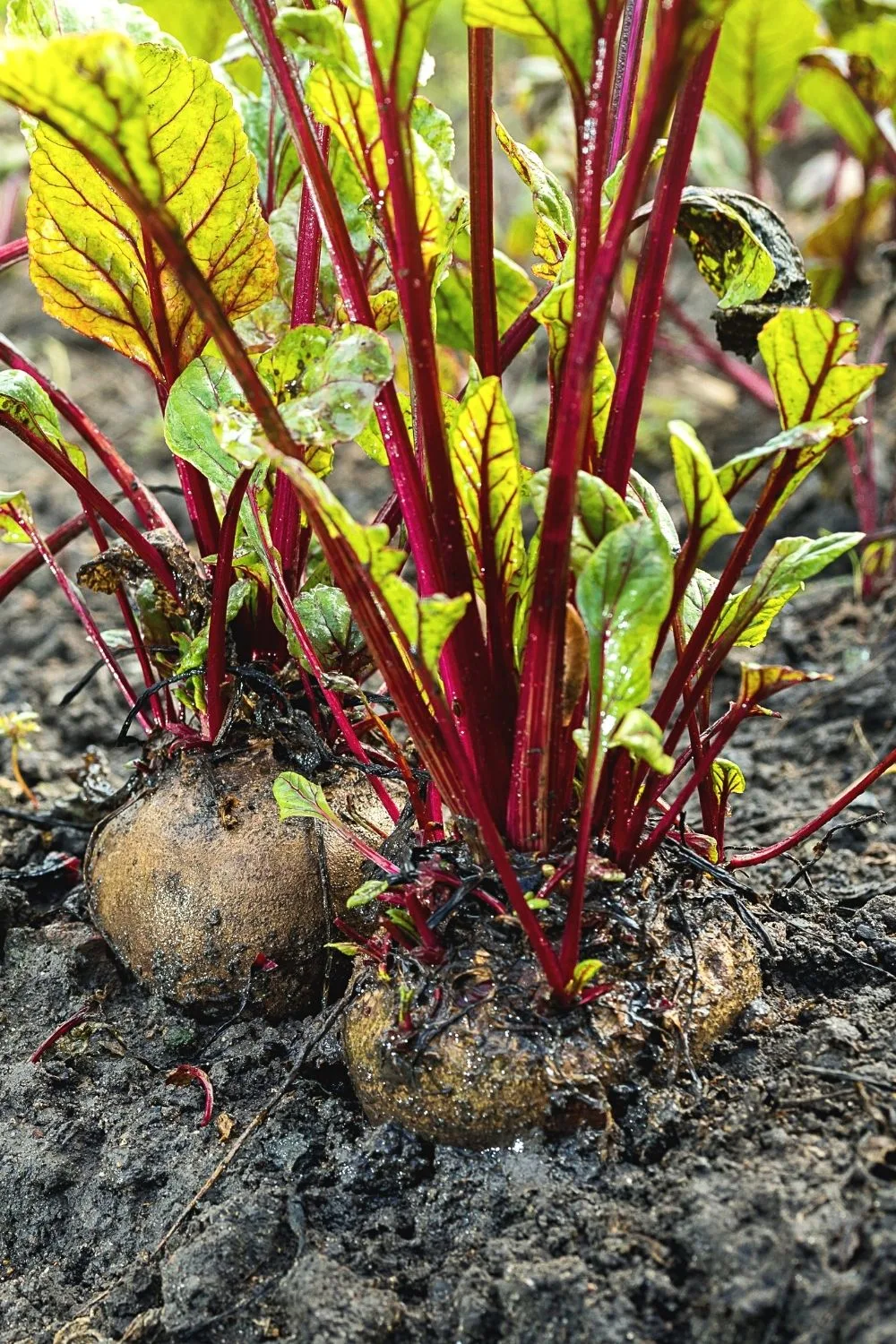
Another healthy option for raised beds is beetroot. Learning to grow it properly is quite the effort; however, it becomes fun once you get it.
When grown the size of a golf ball, homegrown beetroot beats the commercial variety; it turns out to be sweeter and tender.
This plant thrives in raised beds if other needs are met, such as indirect sunlight and weekly watering.
To keep the plant moist, sow the seeds in early April and keep sowing more within two weeks until June.
It is no secret that home-grown beetroot is much better than any store-bought kind.
Home-grown beetroot is generally tender and sweeter tasting.
Beetroot seeds should be sowed straight into the soil of your raised bed. Composting the soil early in April, depending on your location, is also viable.
But, it is then necessary to keep the soil moist after this is done.
Planting your beetroot seeds intermittently can be done. Doing so will result in several months of harvesting.
You can plant a few of your beetroot seeds from April until June every two weeks.
Just like potatoes, beetroots are quite easy to grow and have a preference for soil that is loamy. Growing this vegetable in a raised bed means you can cater to their preferences.
Doing so will help you to get the best growth out of your vegetables.
Do not plant beetroots with beans, however. Beetroots prefer low nitrogen levels.
This environment is the exact opposite of what you will get if you plant and grow beans, as they release high nitrogen levels while growing.
Make sure to try the ‘Chioggia’ variety.
- Scientific name:
- Light Requirement: moderate to high
- Watering requirements: infrequent
- Growth rate: moderate
- Temperature: 50 to 70 degrees Fahrenheit
- pH: 6 to 7
- Height: 360 inches
- Care: mild to moderate
12. Courgettes (Zucchini Summer Squash)
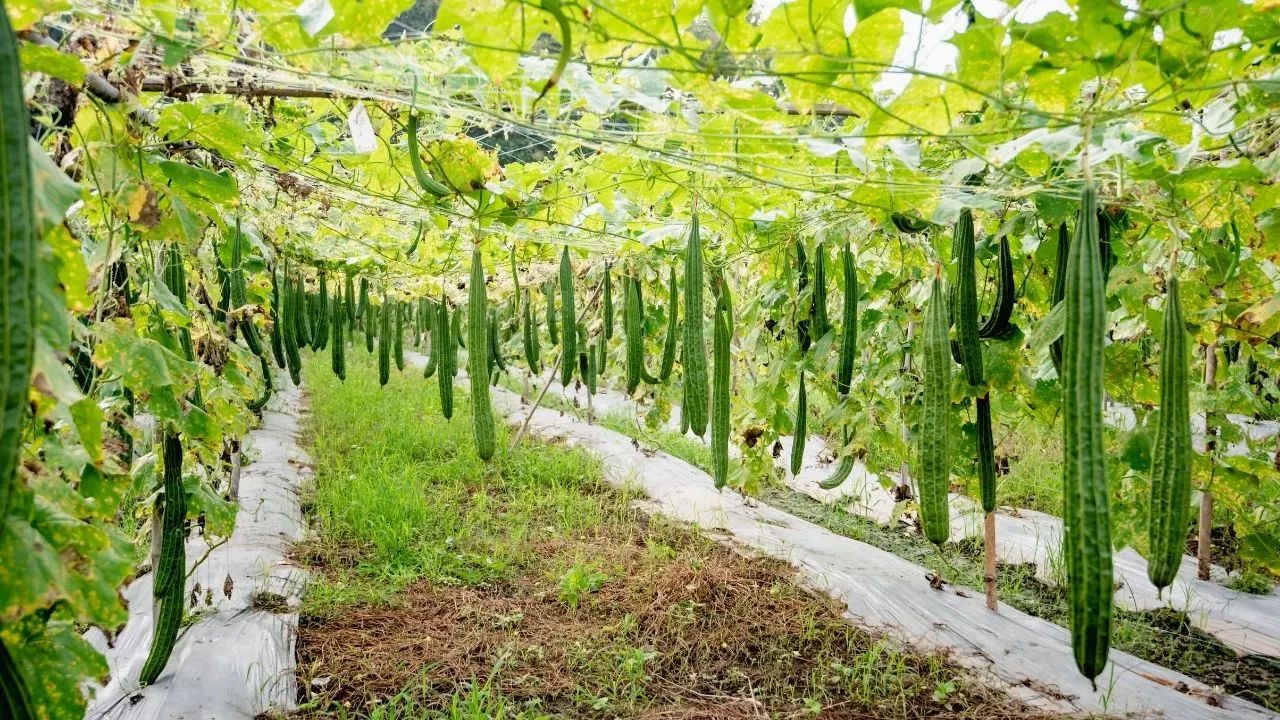
Courgettes are bumper crops that you can grow in raised vegetable garden beds.
If you want bumper crops while growing vegetables on a raised bed, courgettes are for you.
Just one of these plants will provide a supply that lasts the entire summer.
To keep it compact, train it as a trailing variety. Moreover, sow seeds in April will be big enough to be harvested eight weeks later.
This vegetable is also one that requires the assistance of a support structure. The vine-type varieties of zucchini are the best ones to plant.
Growing zucchinis in a raised garden bed is admirable for the plant and you too! Your zucchini will be contained in a raised bed and not spread and take over your garden.
Most gardeners prefer to plant zucchinis on their own in a bed. This is because these plants have spreading stems and grow wide leaves.
However, some vegetable variants grow well with zucchini.
Garlic and spinach grow well when planted in the same bed as Zucchini.
But, to benefit your zucchini plant, you can plant it with beans. Zucchini love the high nitrogen levels produced by the different bean plant varieties.
Sow your zucchini seeds straight into the raised bed. These plants hate the cold and do not cope well with transplanting.
You can expect your plant to begin to vine roughly five weeks after planting. Most zucchini varieties can be harvested after sixty days or so.
- Scientific name: Cucurbita pepo
- Light Requirement: high (full sun)
- Watering requirements: frequent
- Growth rate: slow
- Temperature: 70 to 95 degrees Fahrenheit
- pH: 5.6 to 8.0
- Height: 2 feet
- Care: mild
13. French Beans
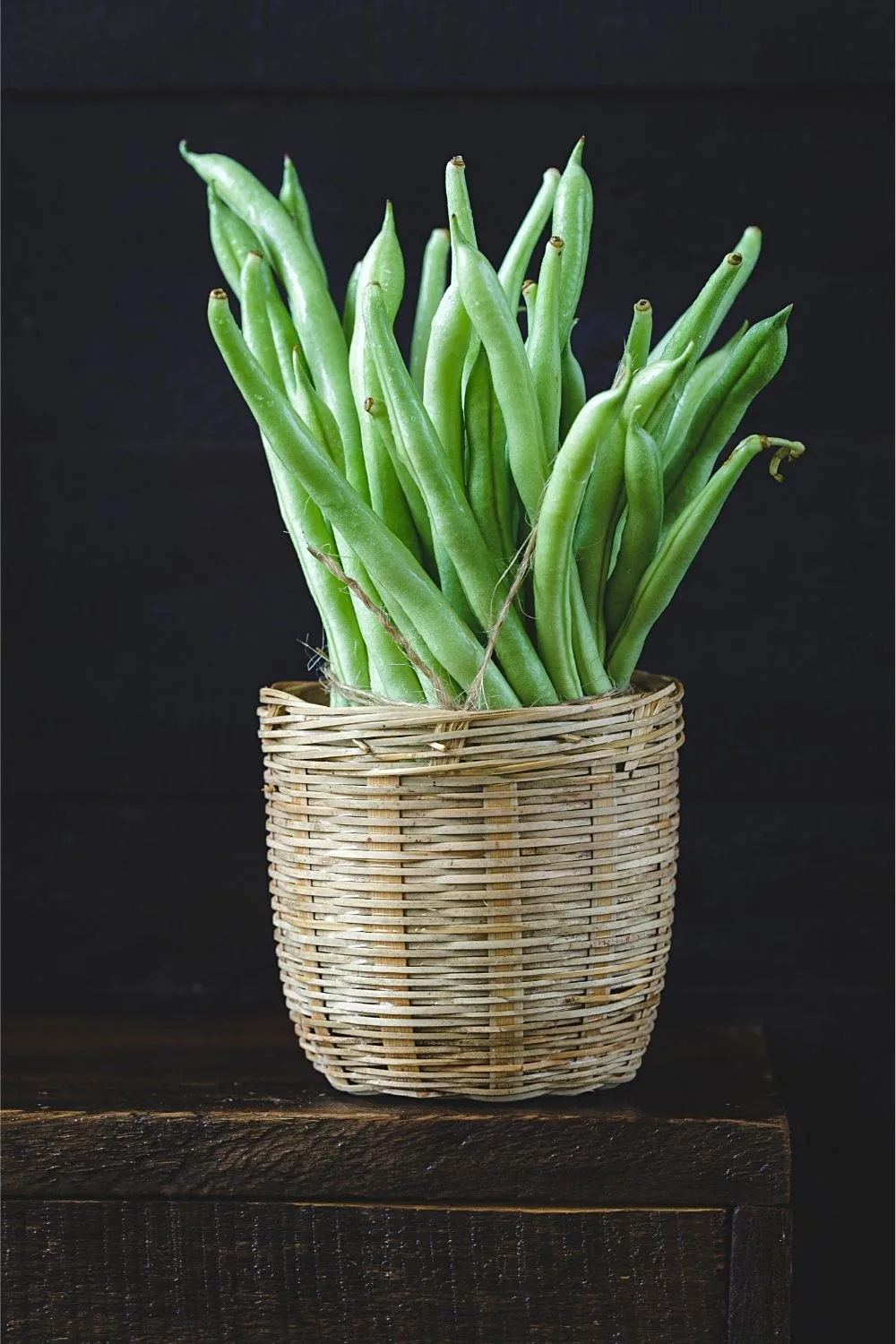
Add French bean to your raised beds’ plants collection as it’s easy to grow and not as demanding as others.
It allows other plants to grow with it without crowding them or unfairly competing for nutrients.
It can be trained as a climbing plant that ideally should be sown in mid-May.
Harvest this crop ten to twelve weeks later when it seems mature and healthy. Choose varieties like mistik and cobra for more flavor.
- Scientific name: Phaseolus Vulgaris
- Light Requirement: moderate to high
- Watering requirements: frequent
- Growth rate: moderate
- Temperature: 50 to 60 degrees Fahrenheit
- pH: 5.5 to 6.5
- Height: 72 inches
- Care: mild to moderate
14. Peas
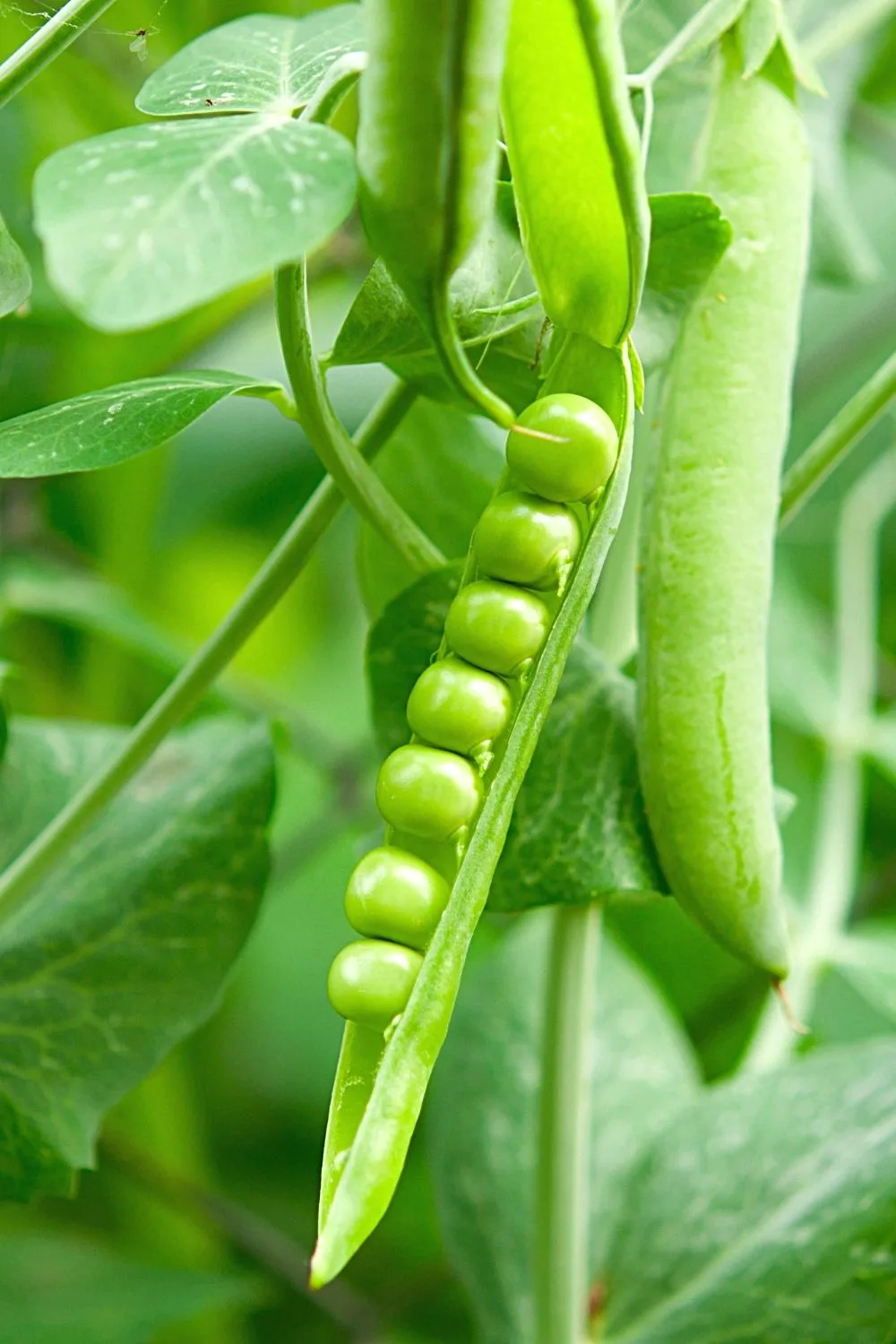
One of the most widely used vegetables is peas. Peas grow well when trained in netting support and don’t require much care.
However, you may have to look out for mice as they tend to feed on pea plants before they germinate.
Therefore, preferably sow them indoors and harvest them when they are big enough to eat.
- Scientific name: Pisum sativum
- Light Requirement: moderate to high
- Watering requirements: rare
- Growth rate: moderate
- Temperature: 55 to 65 degrees Fahrenheit
- pH: 6 to 7.5
- Height: 36 to 48 inches
- Care: mild to moderate
15. The Three Sweet Sisters
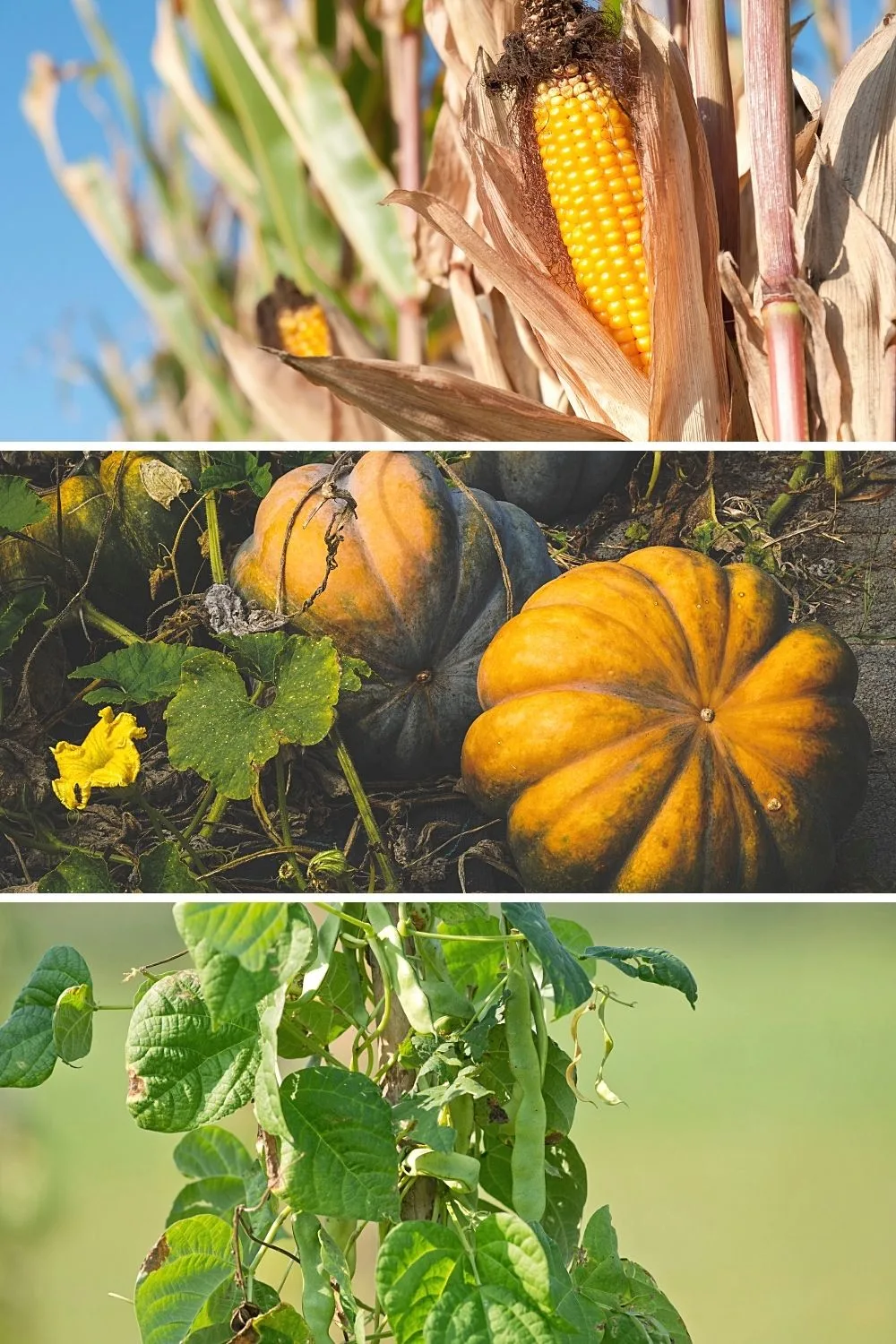
To make the most of a small space with a raised bed, try a combination of sweetcorn, squash, and climbing beans, together known as ‘the three sweet sisters.’
The sweetcorn plant offers support for the climbing beans, while squash grows around the feet, inhibiting the growth of weeds and providing ground shade.
- Scientific name: Three Sweet Sisters
- Light Requirement: moderate to high
- Watering requirements: unknown
- Growth rate: moderate
- Temperature: unknown
- pH: 6 to 7
- Height: 47 to 59 inches
- Care: mild to moderate
16. Potatoes
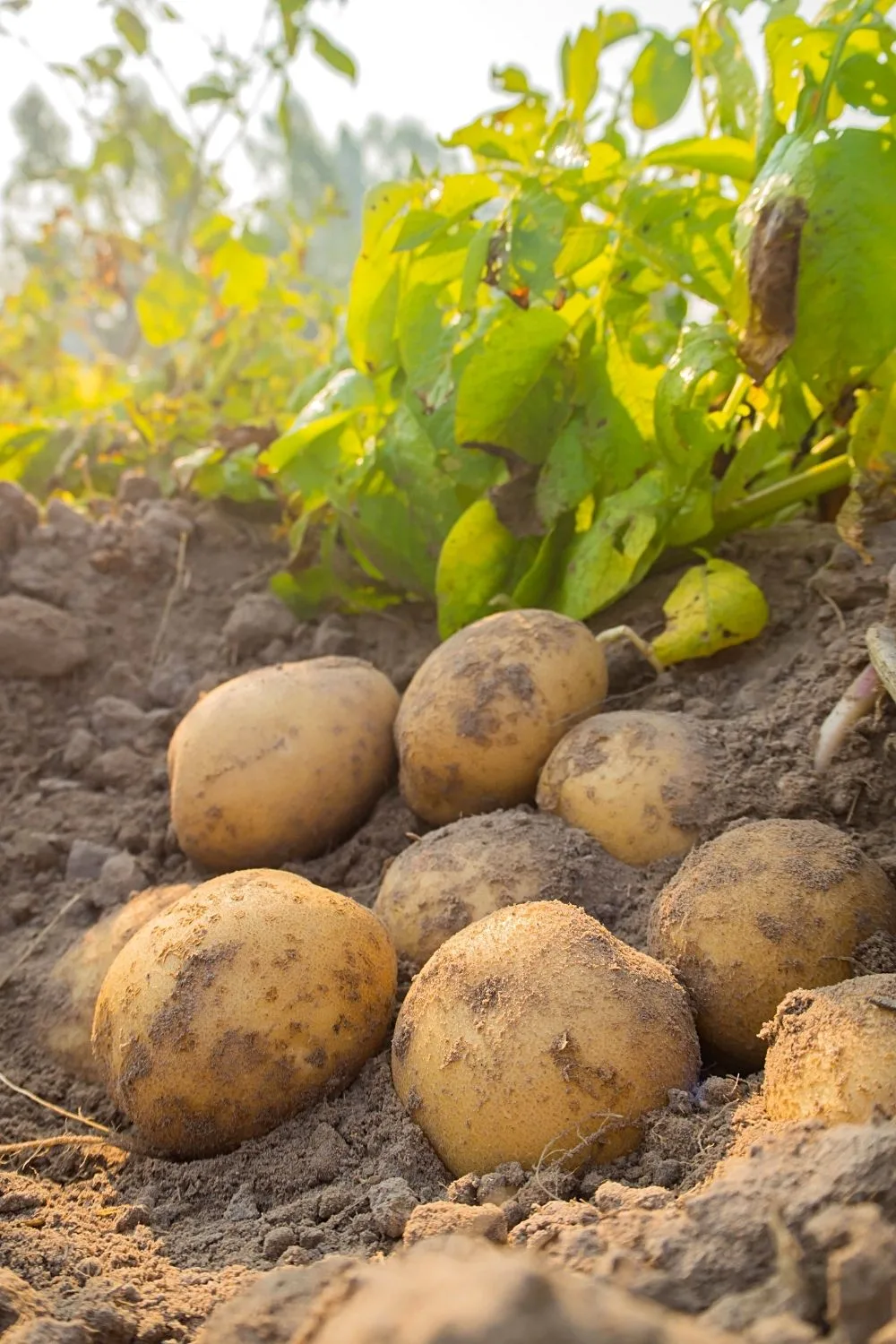
A top favorite vegetable worldwide is potatoes, which you can use to make dishes and even salads.
If grown at home, you get an unlimited supply of potatoes all year round. Plant them in rich and acidic soils, watering them regularly and exposing them to full sunlight.
Moreover, plant potatoes when the temperatures are not extreme.
- Scientific name:
- Light Requirement: moderate to high
- Watering requirements: frequent
- Growth rate: moderate
- Temperature: 45 to 50 degrees Fahrenheit
- pH: 6 to 6.5
- Height: 40 inches
- Care: mild to moderate
17. Mint
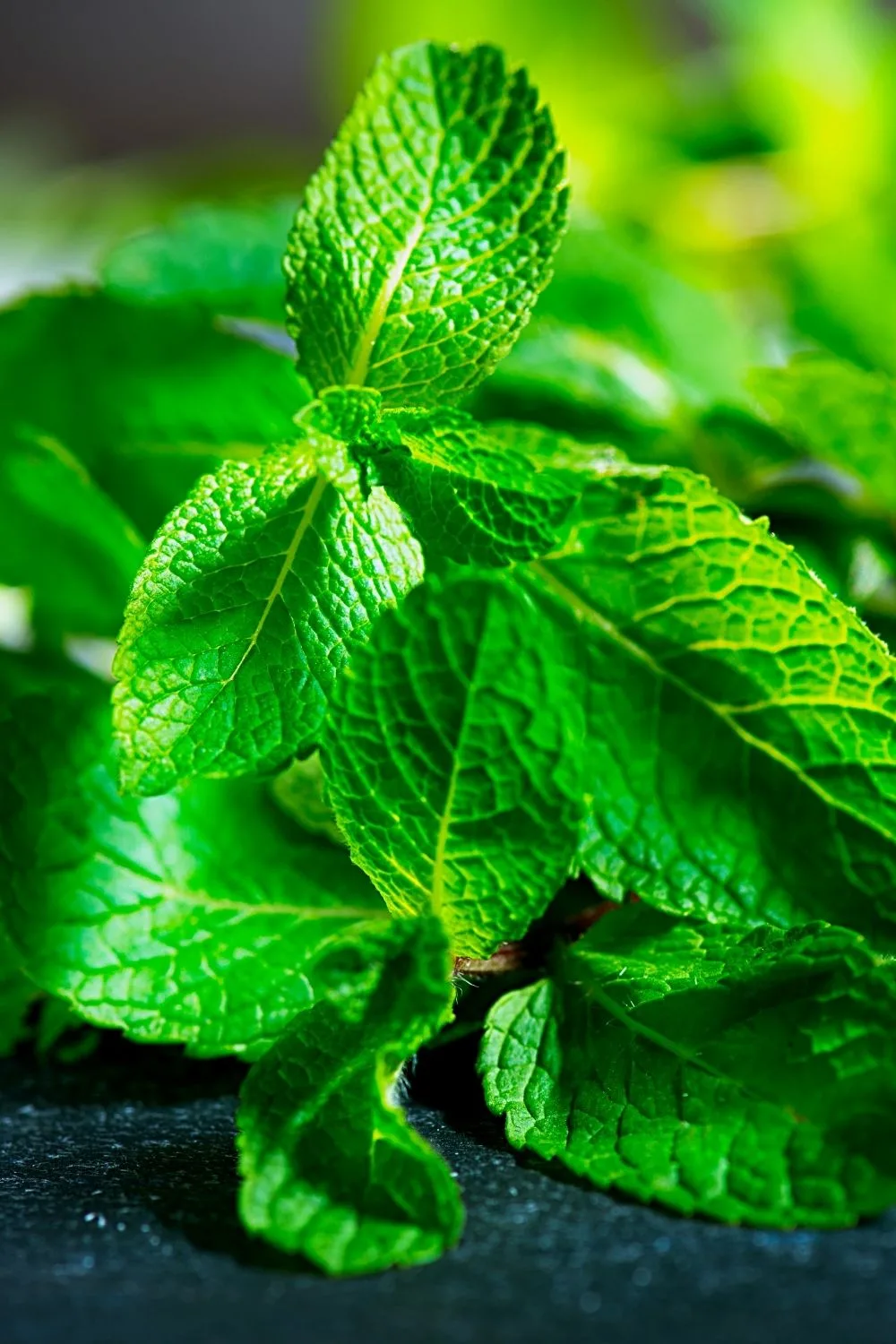
One of the easiest raised beds vegetables is mint. One significant benefit of planting mint is that you can cut them anytime as they tend to spread and regrow quickly.
Whether growing directly or in water glasses, they’ll manage just fine. Pick the leaves when they are young for more flavor and freshness.
Use them in dressings as well as sauces and teas.
- Scientific name: Mentha
- Light Requirement: mild to moderate
- Watering requirements: infrequent
- Growth rate: moderate
- Temperature: 65 to 70 degrees Fahrenheit
- pH: 6 to 7
- Height: 12 to 18 inches
- Care: mild to moderate
18. Corn
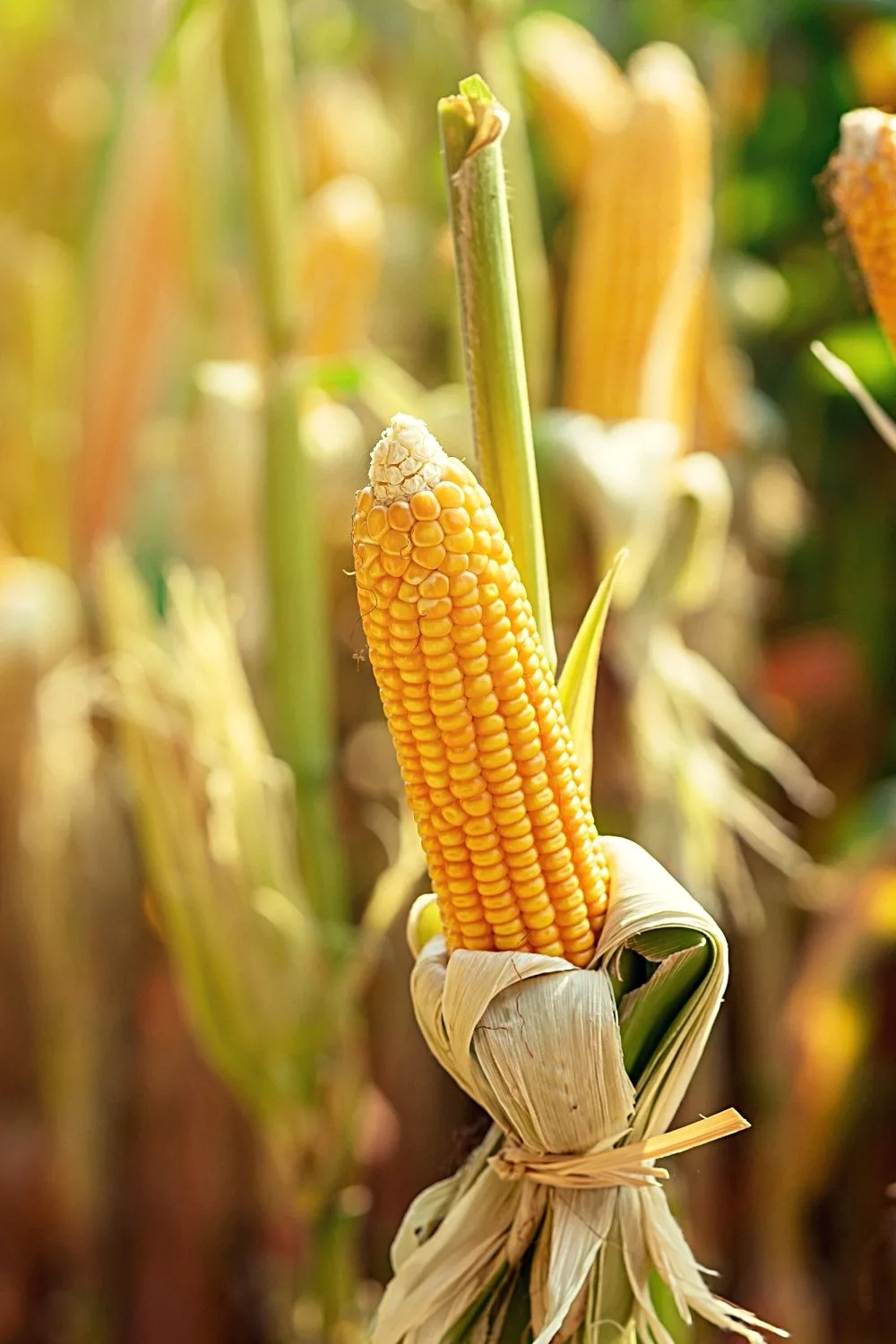
Another prime favorite of gardeners is corn, a fast-growing crop with several uses.
You can plant small numbers or large quantities for a greater supply; however, ensure you sow it outdoors.
Moreover, leave some space between the plants and maintain good hydration.
- Scientific name: Dracaena fragrans
- Light Requirement: mild to moderate
- Watering requirements:
- Growth rate: moderate
- Temperature: 50 degrees Fahrenheit
- pH: 5.8 to 6.2
- Height: 180 to 600 inches
- Care: mild to moderate
19. Beans
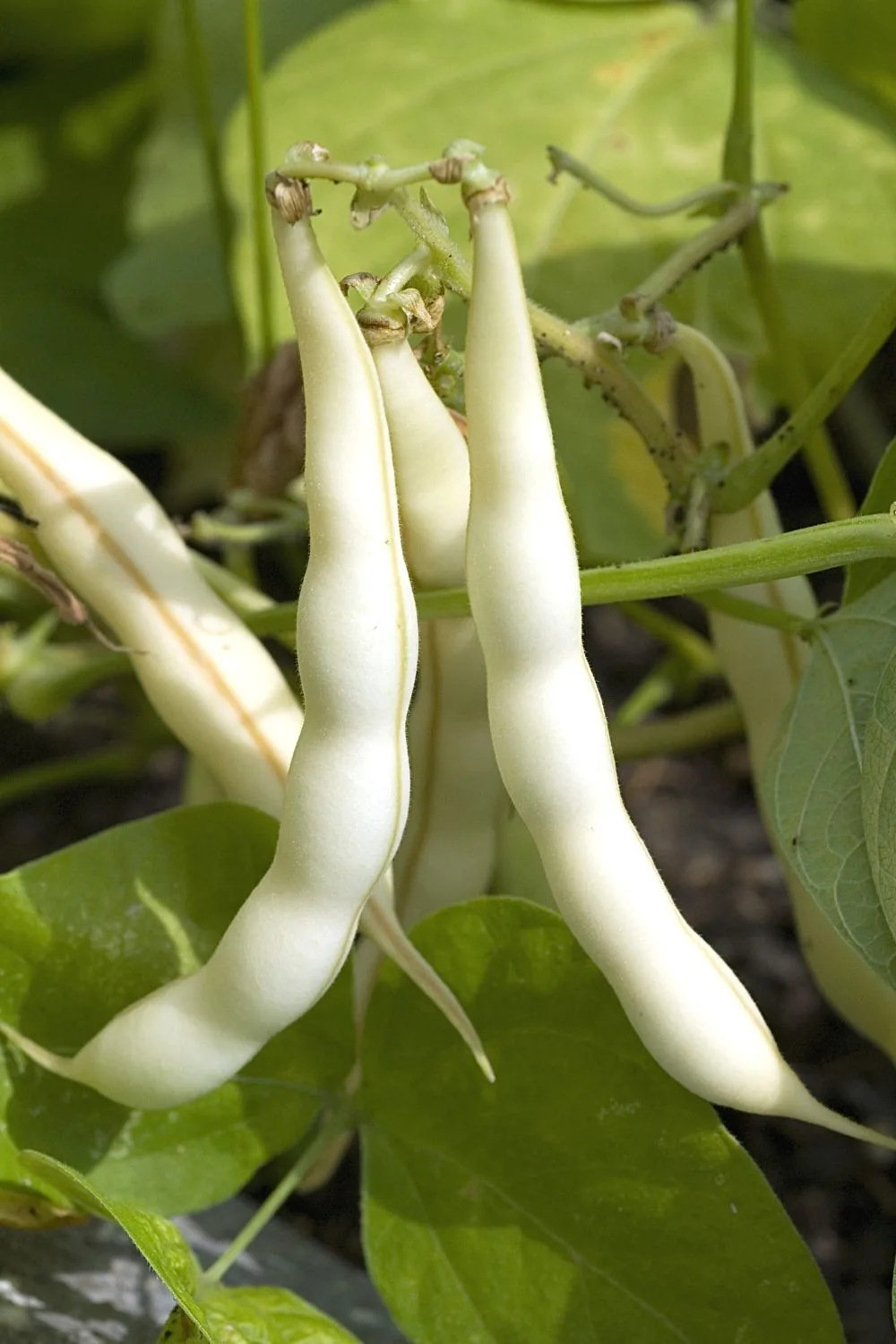
A medium maintenance vegetable for growing on raised beds is beans. It is a healthy crop with numerous uses and benefits.
However, it is not for beginners, as handling its pests can be a huge issue.
This plant requires vigilant surveillance and is slightly more demanding than others.
- Scientific name: Phaseolus vulgaris
- Light Requirement: moderate to high
- Watering requirements: infrequent
- Growth rate: moderate
- Temperature: 50 to 70 degrees Fahrenheit
- pH: 6 to 7
- Height: 6 to 12 inches
- Care: moderate
20. Cucumber
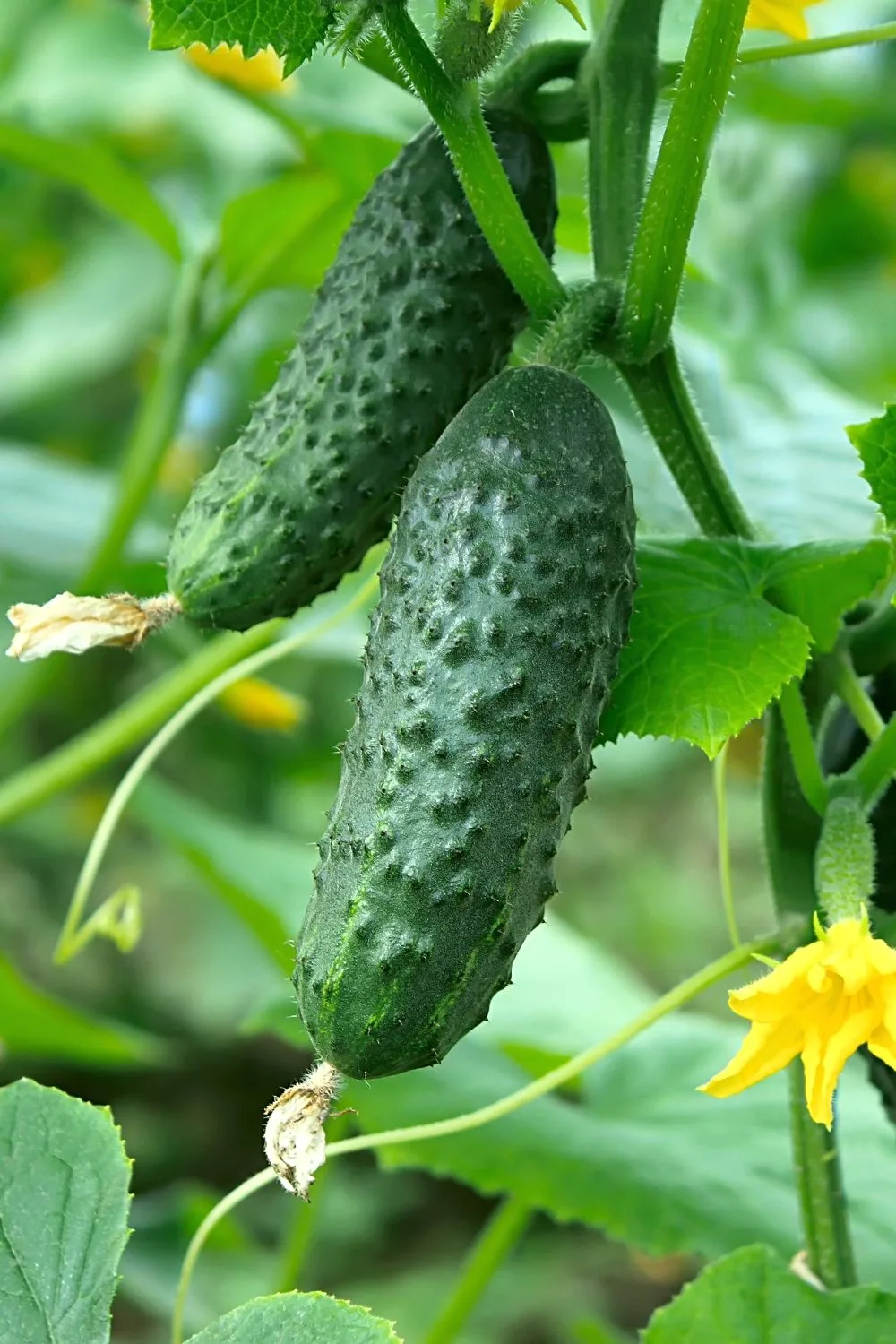
A crop full of nutrients is cucumber, requiring little care, and is easy for beginners.
The plant is a warm-weather lover and likes its soil moist and organic.
It cannot bear frost, so don’t plant it in the cooler seasons. Water the cucumbers regularly for a sweet flavor and overall health.
The exceptionally popular cucumber is among the perfect candidates for growing in a raised bed.
Because these vegetables are suckers for excellent drainage, they thrive when they are grown in raised garden beds.
Cucumbers, however, have a weak stalk and require a trellis’s assistance.
A trellis should be provided to offer the needed support as soon as the plant begins to grow. This support feature is also necessary to avoid the plant’s vines taking over the bed.
This is the typical behavior of the cucumber plant. You may prefer to keep this vegetable growing in a raised bed alone.
Nonetheless, with proper care and their ideal growing conditions met, you will be graced with delicious cucumbers in no time!
Although, it is best to avoid stagnating the cucumber plant’s soil. This will result in the toughening up of the cucumber, which is less than desirable.
- Scientific name: Cucumis sativus
- Light Requirement: moderate to high
- Watering requirements: frequent
- Growth rate: moderate
- Temperature: 75 to 85 degrees Fahrenheit
- pH: 6 to 6.5
- Height: 36 to 144 inches
- Care: mild to moderate
21. Pepper
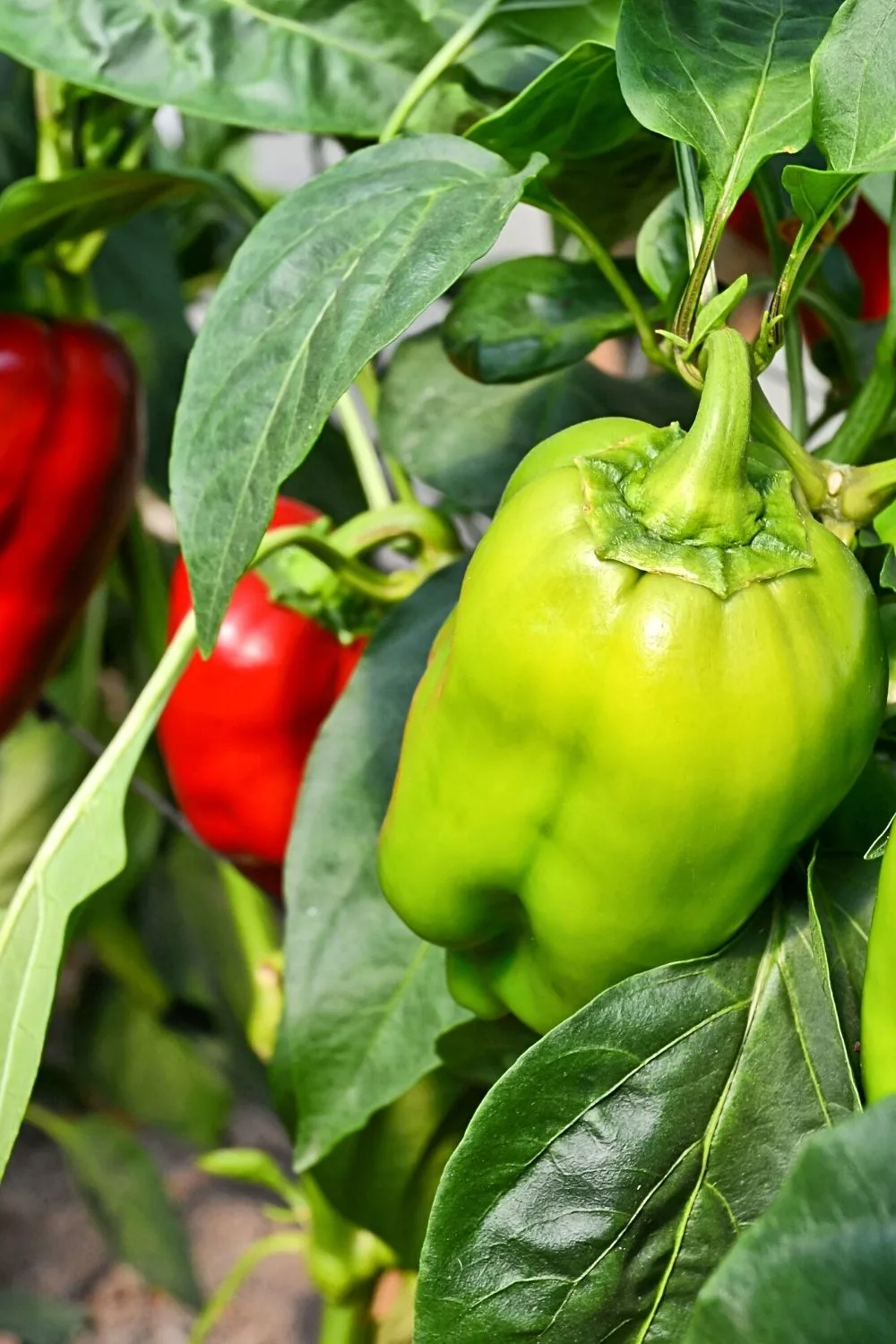
Another easy addition to your raised beds vegetables can be pepper (Bell Peppers). It is a widely used crop added to several international and local dishes.
Although, you are not limited to just one variety of pepper plants. If you are adventurous, try your hand with other pepper varieties.
Pepper varieties available for choice are:
- Green pepper
- Red pepper
- Yellow pepper
- Cayenne pepper
- Habanero pepper and even,
- Jalapeno pepper
Peppers grown in a raised bed are a recipe for success. Not only are they effortless vegetables to grow, but peppers also bring a vibrant splash of color.
This addition of color is bound to make any garden look fantastic! And, of course, we cannot forget just how delicious they are.
It does well in sunlight and needs frequent watering but with high-quality soils.
- Scientific name: Capsicum
- Light Requirement: moderate to high
- Watering requirements: frequent
- Growth rate: moderate
- Temperature: 60 to 90 degrees Fahrenheit
- pH: 6.5 to 7
- Height: 36 inches
- Care: mild to moderate
22. Spinach
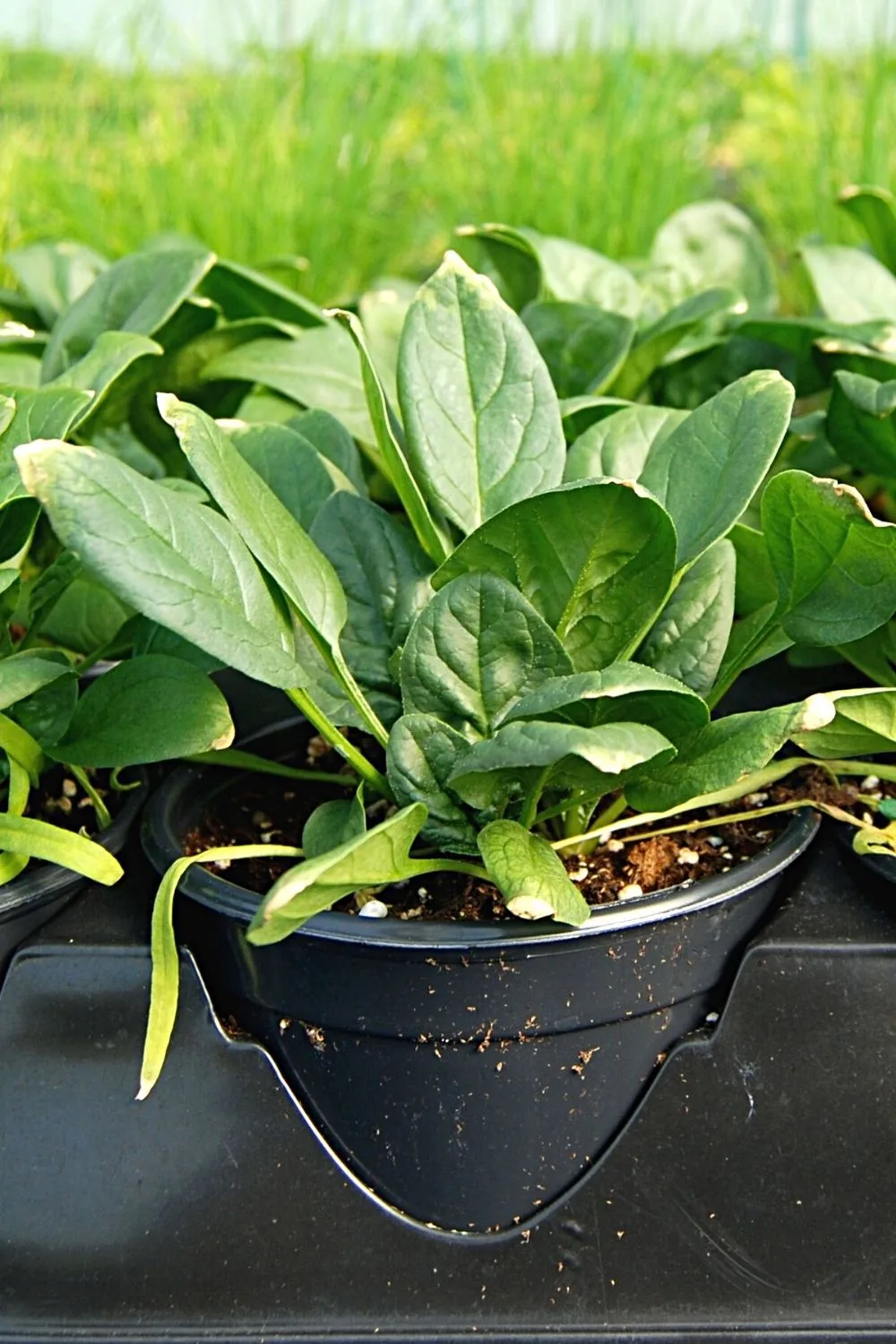
A vegetable that likes low temperatures is spinach. Spinach is planted in spring or fall full of essential micronutrients like iron.
It is an easily manageable crop that does exceptionally well in well-draining and clay-free soils.
Harvest your spinach when its leaves are big enough to eat.
- Scientific name: Spinacia oleracea
- Light Requirement: moderate to high
- Watering requirements: infrequent
- Growth rate: moderate
- Temperature: 50 to 60 degrees Fahrenheit
- pH: 6.5 to 8
- Height: 18 inches
- Care: mild to moderate
23. Broccoli
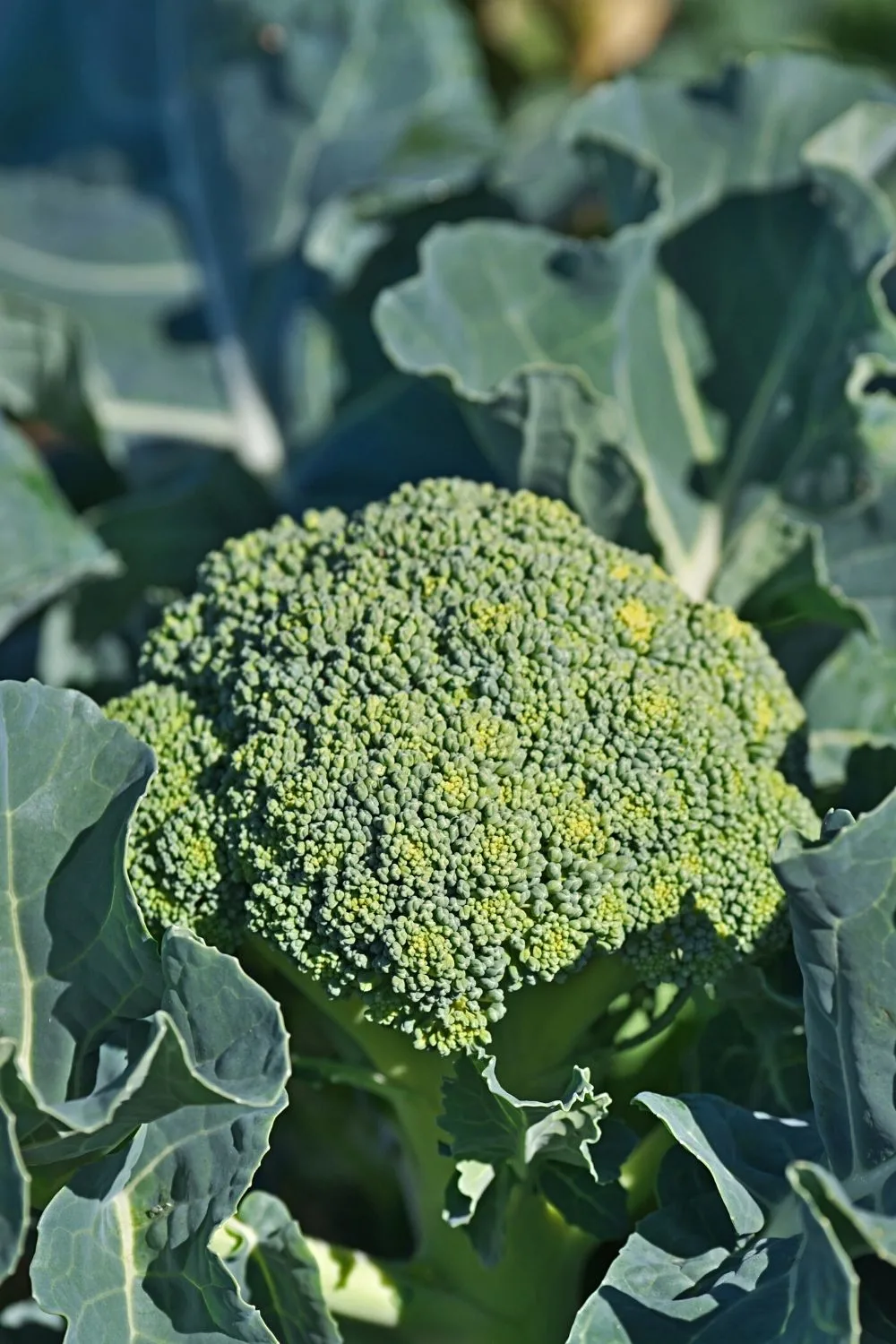
Another cold weather-loving vegetable is broccoli. Plant this crop in manure and compost for adequate growth and ensure the soil has plenty of nutrients throughout the growth period.
Additionally, maintain temperatures of 40 degrees Fahrenheit for the most flavorful broccoli.
Water it regularly and keep an eye on the plant’s head, as when it turns yellow or black, it has passed its harvest time.
- Scientific name: Brassica oleracea var. italica
- Light Requirement: moderate to high
- Watering requirements: frequent
- Growth rate: moderate
- pH: 6 to 7
- Height: 24 to 36 inches
- Care: mild to moderate
24. Kale
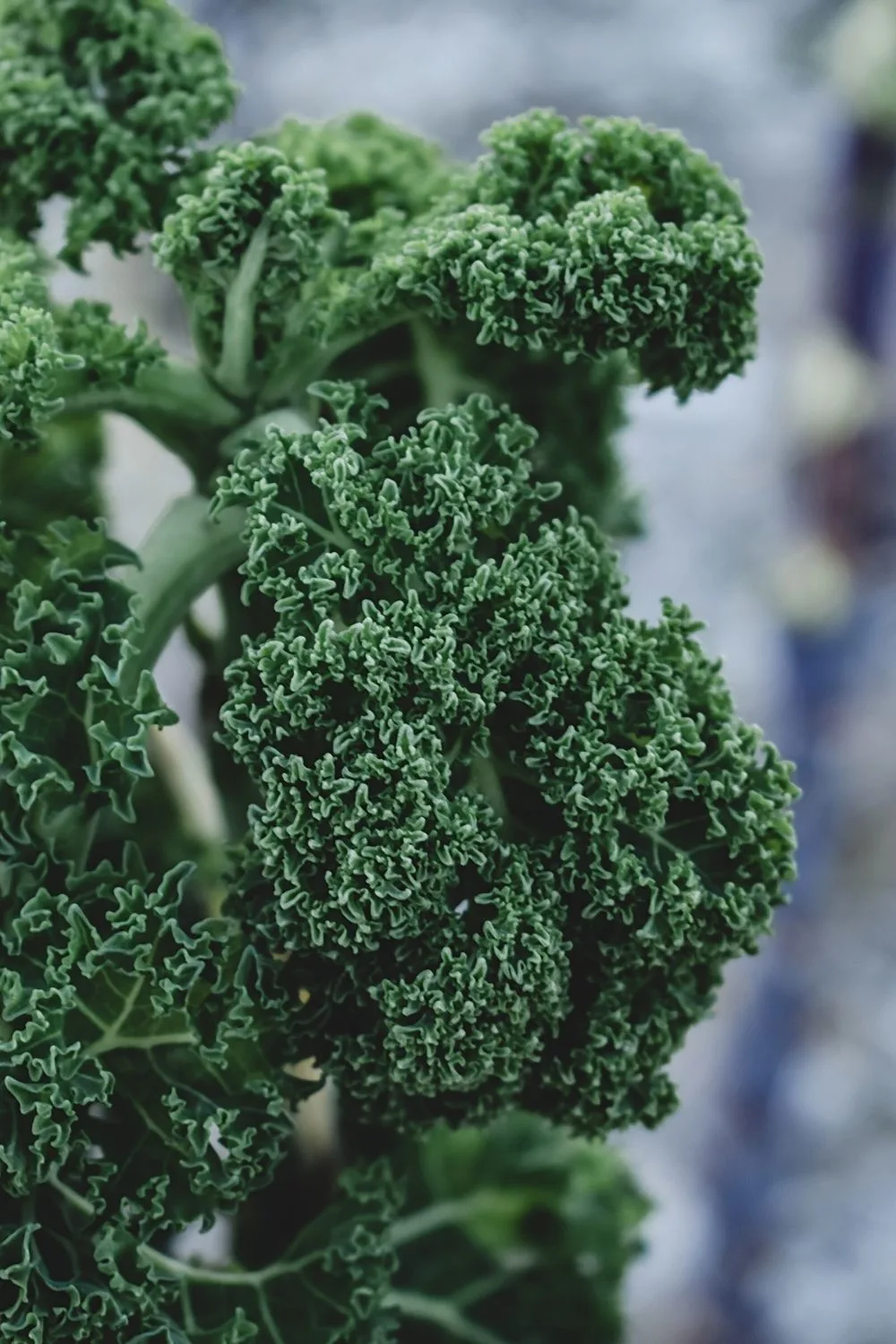
There’s a reason why celebrities are big fans of kale drinks and juices. It is again a cold-loving plant that prefers well-draining, light soils.
Kale is a versatile plant that can be planted in spring or summer and harvested from fall to early winter. They can be grown happily in a smaller space.
However, this vegetable does not do well in hot weather. If they are grown in a season with undesirable weather, you will likely experience a bitter-tasting plant.
But, it is easy enough to protect your kale from the heat. You can extend this vegetable’s growing season by simply growing a taller plant in the same raised bed.
As with lettuce, when you harvest kale, it is better just to take what you need. By only removing the leaves you require at the time, your kale plant will continue to grow.
This means your vegetable will produce more leaves for you to harvest at a later stage.
- Scientific name: brassica oleracea var. ssabellica
- Light Requirement: moderate to high
- Watering requirements: frequent
- Growth rate: moderate
- Temperature: 65 to 75 degrees Fahrenheit
- pH: 6 to 7.5
- Height: 12 to 24 inches
- Care: mild to moderate
25. Celery
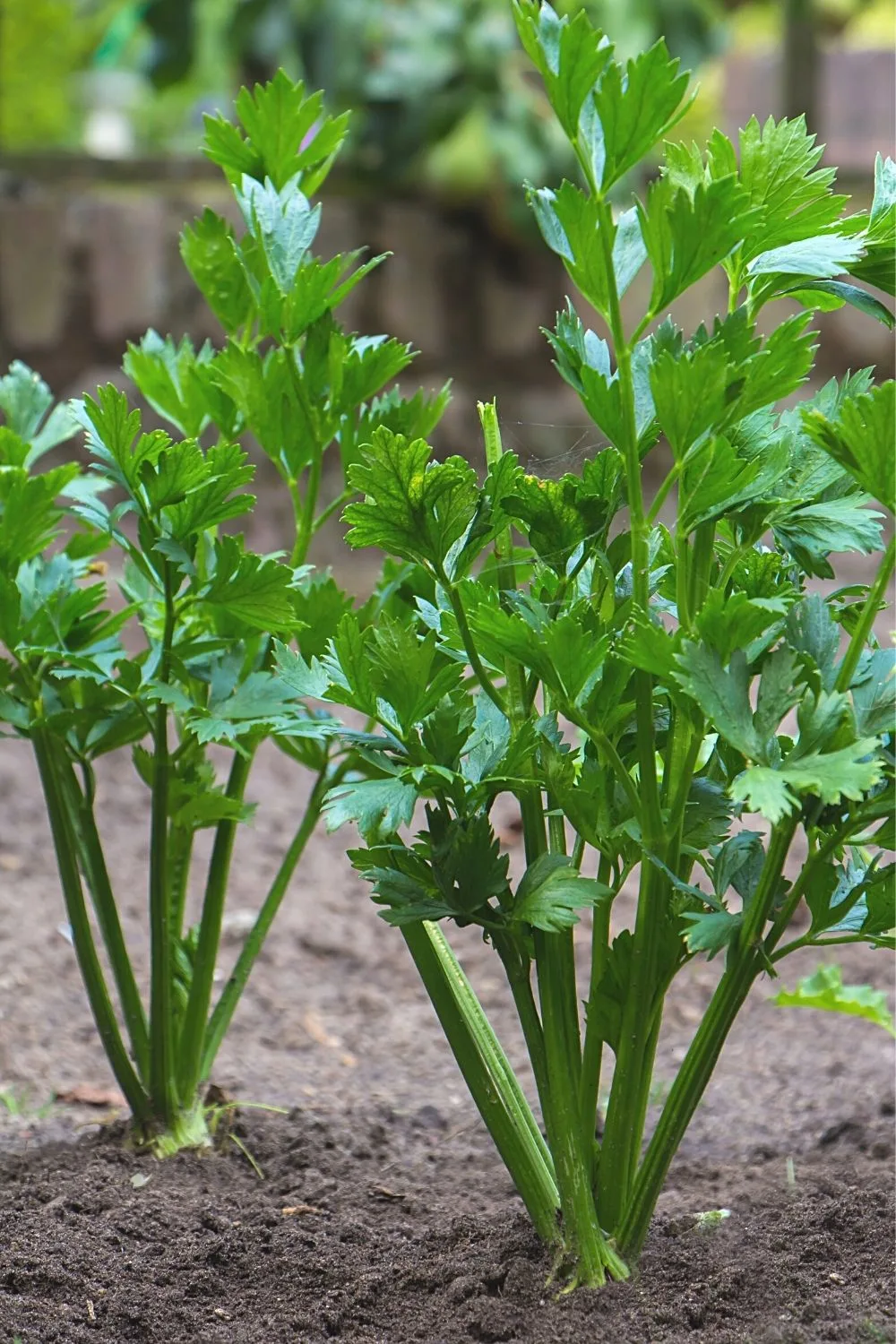
A time-taking vegetable is celery; however, it performs well as a raised bed plant.
Soak the plant’s seeds in the water sometime before planting and prepare the ground with fertilizer and compost.
Moreover, water it often and store it in your refrigerator for two weeks to a month after harvesting.
- Scientific name: Apium gravelens
- Light Requirement: moderate to high
- Watering requirements: frequent
- Growth rate: moderate
- Temperature: 40 to 80 degrees Fahrenheit
- pH: 5.8 to 6.8
- Height: 36 inches
- Care: mild to moderate
26. Cabbage
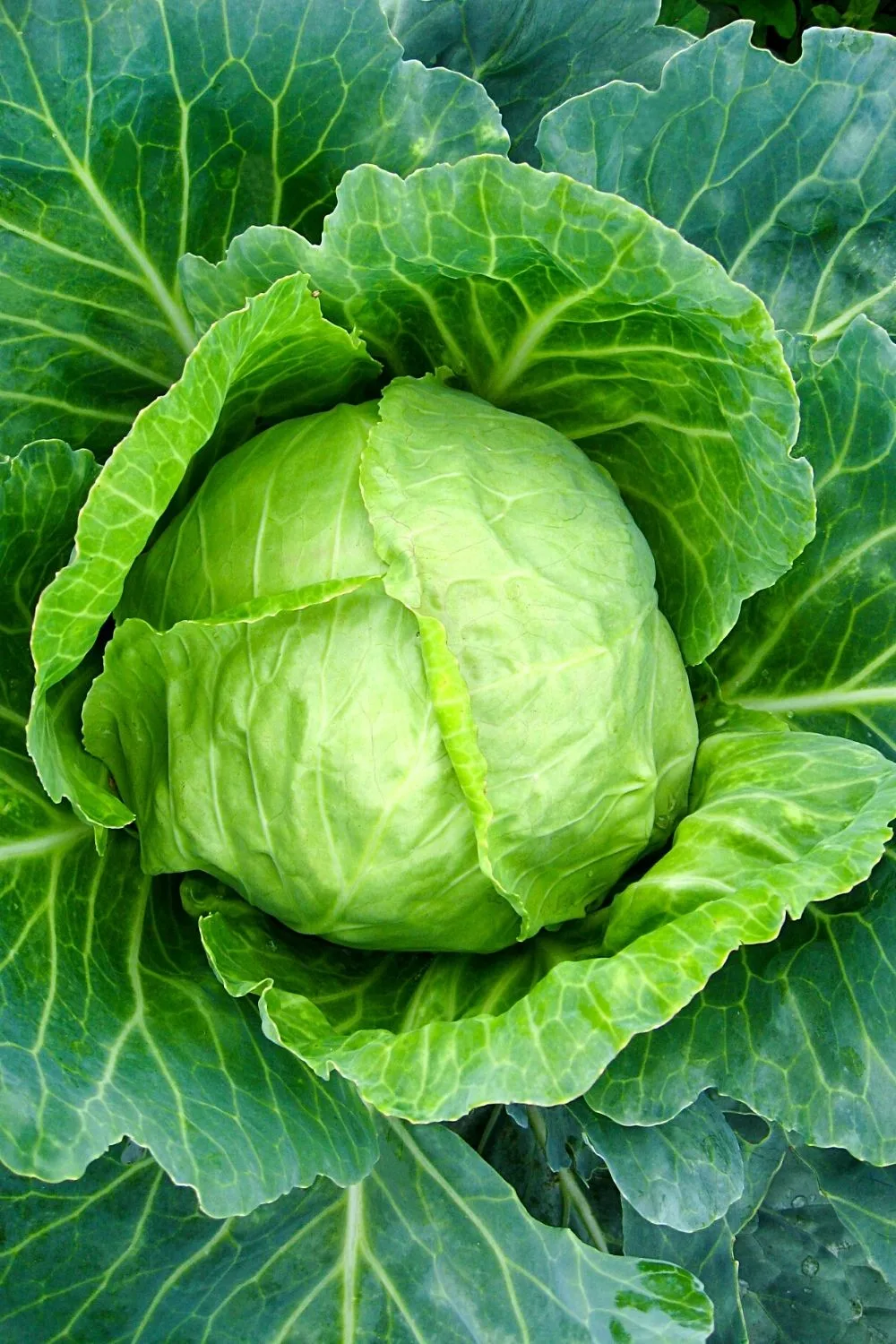
Cabbage or the flowering plant is another crop you can grow on raised beds.
However, it requires plenty of space and a good amount of fertilizer and compost.
Maintain the plant’s ideal temperature and moisture for adequate growth.
- Scientific name: Brassia oleracea var.
- Light Requirement: moderate to high
- Watering requirements:
- Growth rate: moderate
- Temperature: 60 to 70 degrees Fahrenheit
- pH: 6 to 7
- Height: 12 to 14 inches
- Care: mild to moderate
27. Lentils
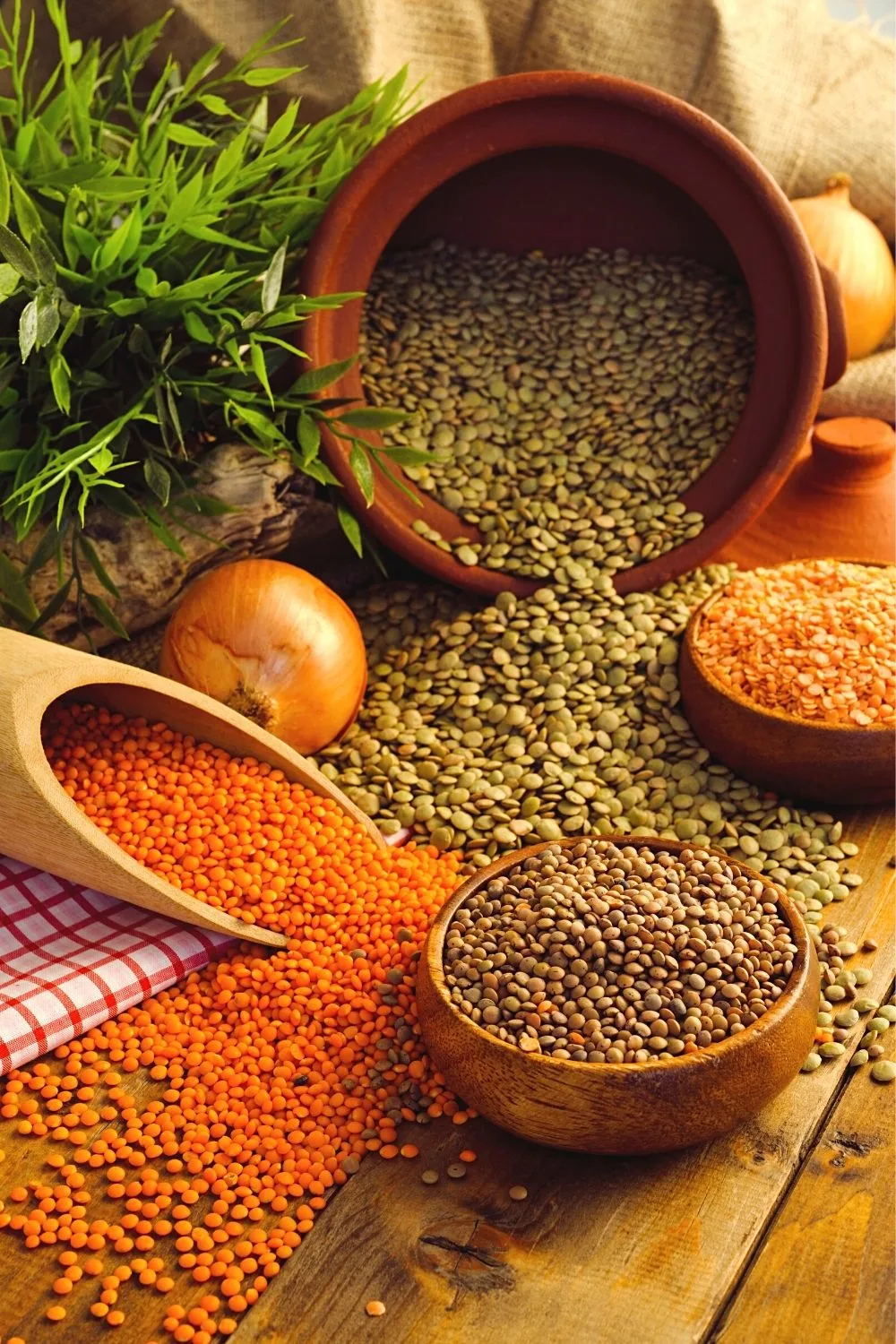
A manageable crop is lentils, small-sized vegetables that can be grown in large quantities for most of the year.
It enjoys well-draining, fertile soils along with plenty of sun.
- Scientific name: Lens culinaris
- Light Requirement: moderate to high
- Watering requirements: infrequent
- Growth rate: moderate
- Temperature: 50 to 70 degrees Fahrenheit
- pH: 6 to 7
- Height: 12 to 30 inches
- Care: mild to moderate
28. Leek
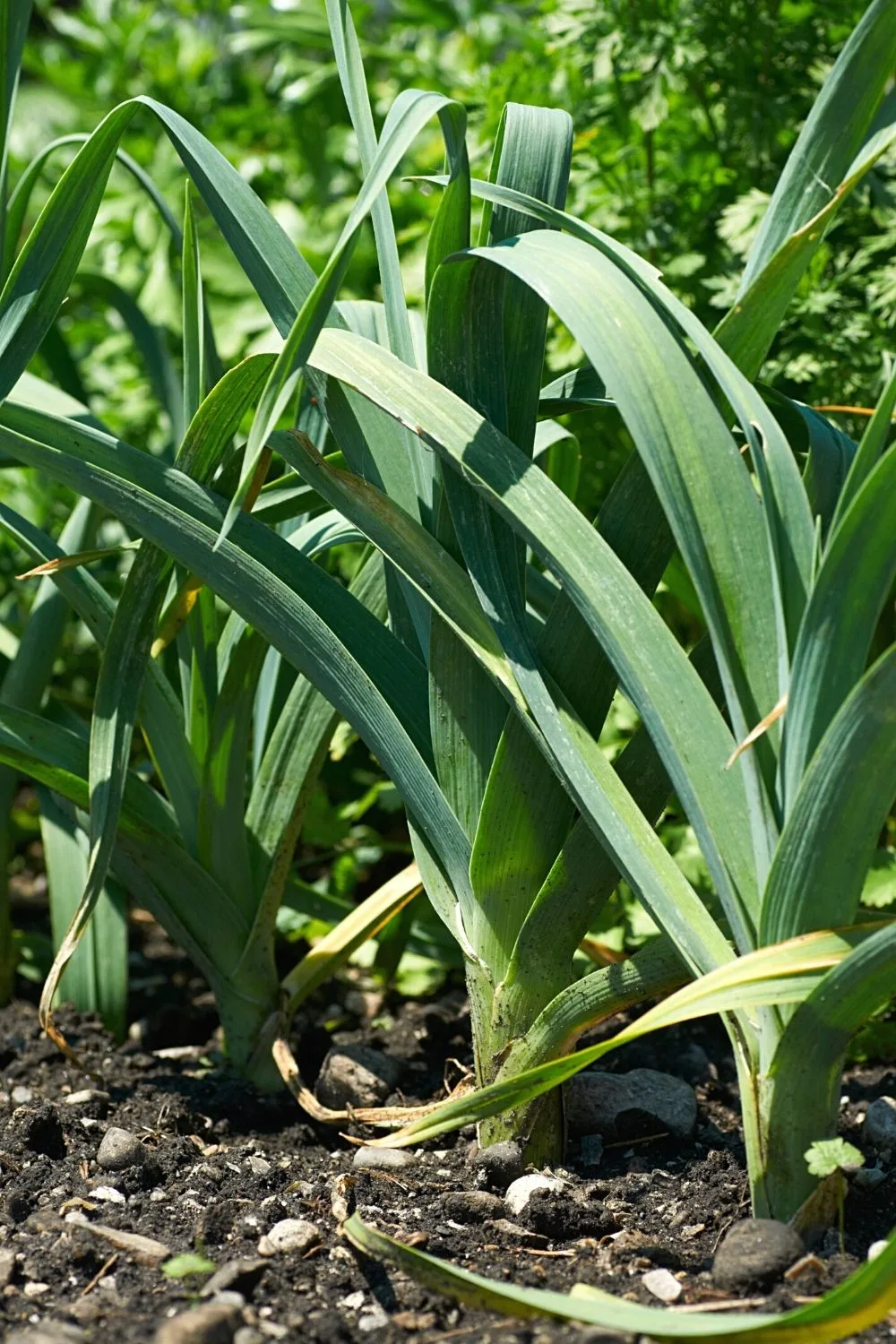
Grow leeks in your raised bed gardens as they are readily available, cheap, and manageable.
They do not require large spaces and do fairly well in light, loose soils with plenty of organic matter.
They taste sweet and mild and have edible leaves as well.
- Scientific name: Allium porrum
- Light Requirement: moderate to high
- Watering requirements: infrequent
- Growth rate: moderate
- Temperature: 55 to 75 degrees Fahrenheit
- pH: 6 to 7
- Height: 12 to 36 inches
- Care: mild to moderate
29. Cauliflower
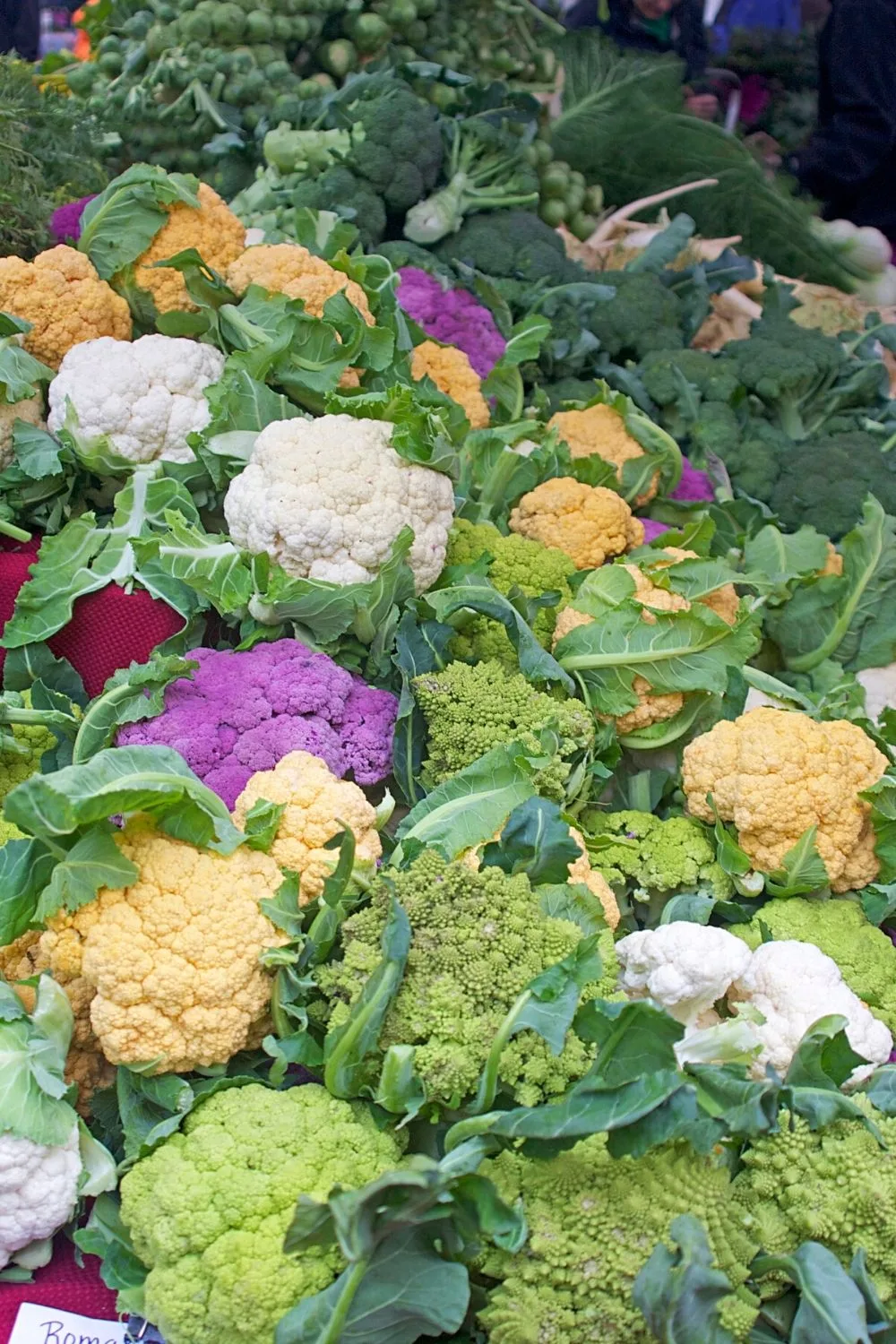
Grow this crop if you’re an experienced gardener with great patience. Cauliflower takes several months to grow and requires ideal temperatures constantly.
Add a good amount of compost and manure beforehand for the best results.
- Scientific name: Brassica oleracea var. botrytis
- Light Requirement: moderate to high
- Watering requirements: frequent
- Growth rate: moderate
- Temperature: 60 to 65 degrees Fahrenheit
- pH: 6 to 7
- Height: 12 to 30 inches
- Care: mild to moderate
30. Asparagus
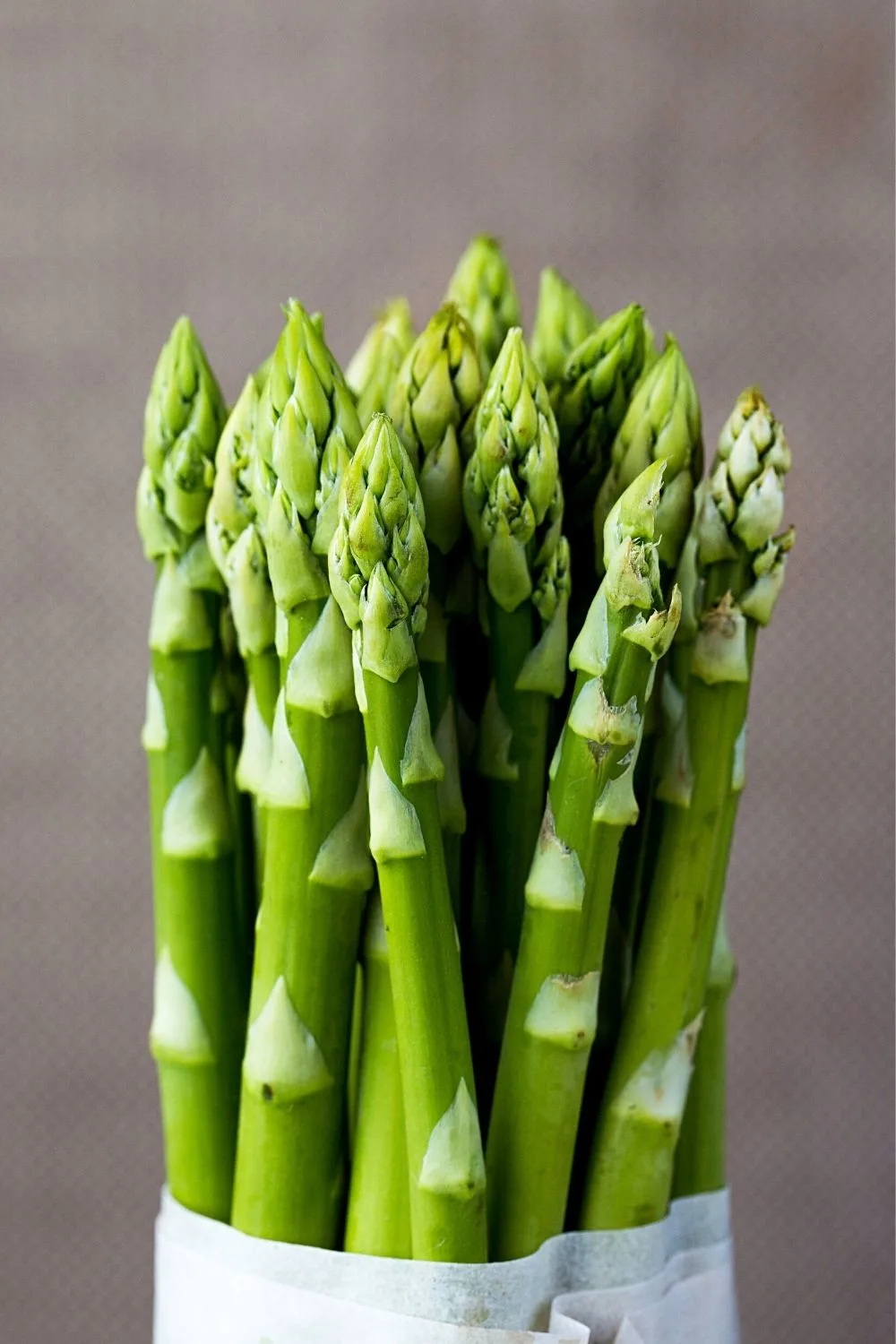
To grow flavorful and healthy asparagus, plant it in moist, fertile soil.
Avoid rotating the plant and plant in spring right after the frost. Furthermore, keep checking for brown foliage and remove it immediately.
- Scientific name: Asparagus Officinalis
- Light Requirement: moderate to high
- Watering requirements: infrequent
- Growth rate: moderate
- Temperature: 70 to 85 degrees Fahrenheit
- pH: 6 to 7
- Height: 60 inches
- Care: mild to moderate
31. Squash
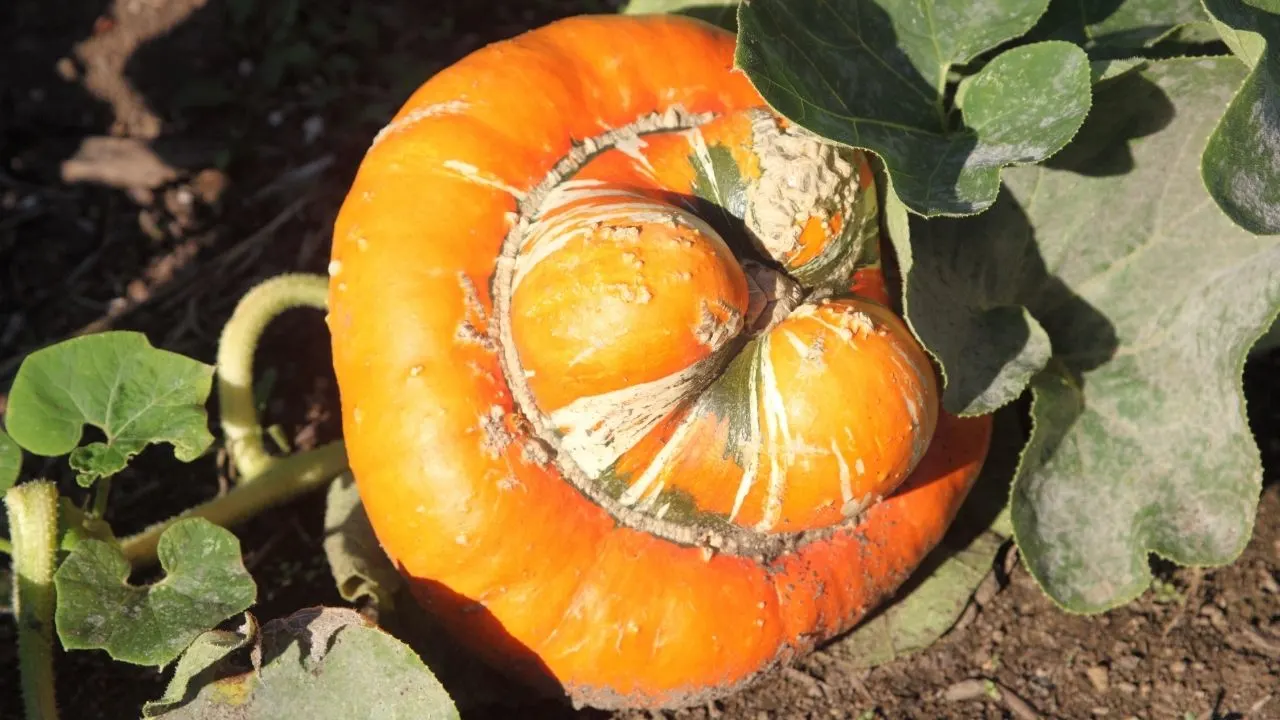
Squashes are super adaptable vegetables.
Yet, these vegetables cannot tolerate frost. This means that squashes value the additional protection and warmth that raised beds can provide.
Other squash-like features easily provided by a raised bed are fertile soil and good drainage.
You should plant your squash seeds only after the last frost. Waiting about a week after the final frost is ideal.
It is possible to sow your squash seeds directly into the raised bed. However, starting your squashes off earlier inside would be more beneficial.
This will allow you to transplant seedlings into your raised bed when the weather has warmed up.
It is recommended to train your squash plant to grow on a trellis.
Using a trellis in the growing of your squash plant has many benefits. First, a squash plant growing up a trellis will receive better air circulation.
It is also easier to spot and monitor your growing squashes. The likeliness of pest problems is reduced too.
The best squash variety for planting in a raised bed is a bush type. It is known that the bush varieties of squashes mature sooner than other squash types.
- Scientific name: Cucurbita
- Light Requirement: high (full sun)
- Watering requirements: frequently
- Growth rate: slow
- Temperature: 65 to 75 degrees Fahrenheit
- pH: 6 to 6.8
- Height: 3 feet
- Care: mild
32. Bok Choy
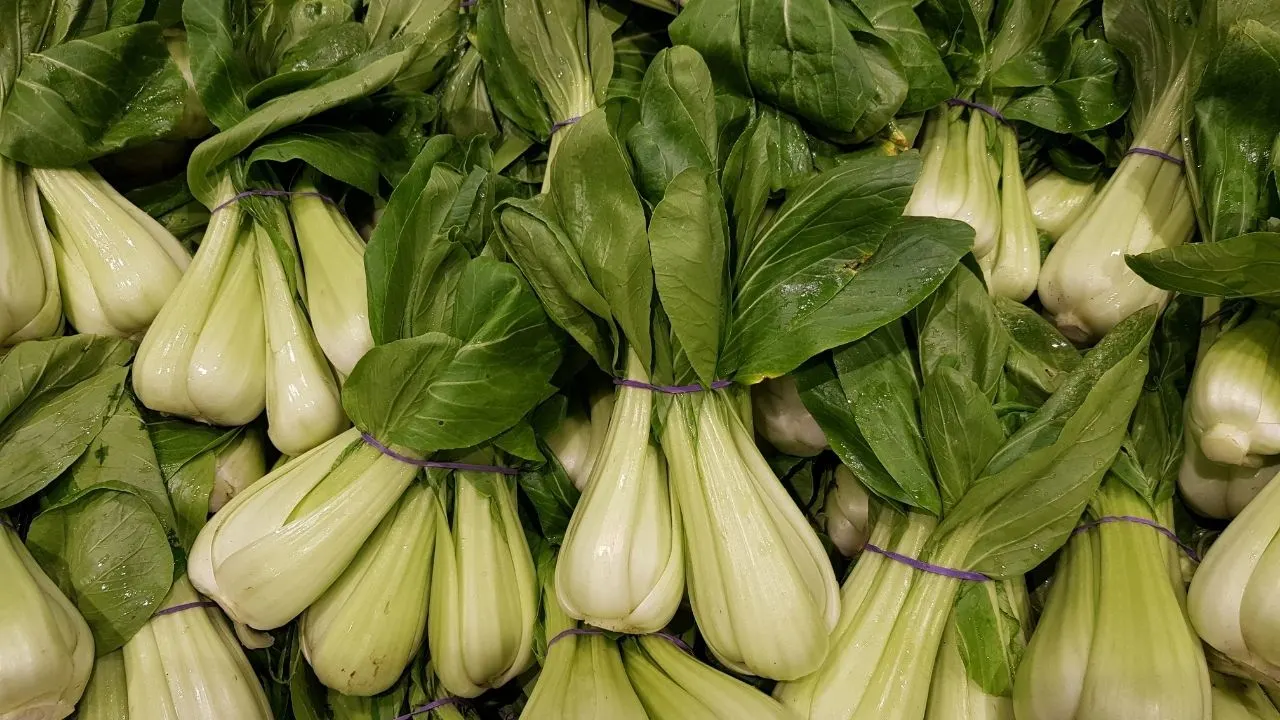
Bok Choy is another vegetable that does not do well with sharing its space with weeds. These plants are heavy feeders but speedy growers.
They thrive in rich soil that is light and loose. Bok Choy is easy to grow and prefers to be grown in cooler weather.
It is best to start this vegetable off indoors. Once the frost has passed, you can transplant the seedlings into your raised bed.
Although it is their preferred environment, Bok Choy must be protected from the cold. This means they are best planted beneath a plant that will provide shade and protection.
- Scientific name: Brassica rapa subsp. chinensis
- Light Requirement: partial shade
- Watering requirements: frequently
- Growth rate: fast
- Temperature: 64 to 68 degrees Fahrenheit
- pH: 6. to 7.5
- Height: 24 inches
- Care: mild
Benefits of Growing Your Own Vegetables
Here are a few reasons why you should opt for growing crops at home:
- Your health improves: growing fresh vegetables and fruits that haven’t been placed on a shelf or fed inorganic food
- It is an economical choice. Grow more crops at half the retail price
- Get some outdoor exercise and build your stamina
- Gardening is a natural stress reliever
- Connect with nature
Benefits of Growing Vegetables in Raised Beds
A benefit of raised bed gardening is that it is perfect for maximizing your space. You can put your smaller spaces to use by simply using techniques such as vertical growing and succession planting.
With raised beds, you can choose where you’ll want your plants to grow.
This includes choosing a location that is ideal for you and your plants. You can place the raised bed in a spot where the vegetables you plan to grow in it will flourish.
But what if you notice your plants are not doing as well as they should be in the area you chose for them?
You can move the raised bed to a better location for your plants. Although it does take a bit of work and some effort to do so, this tactic eventually solves the problem.
The best thing about raised garden beds is that you have complete control.
With planting directly into the ground, there can be a lot of uncertainty. You can never really know exactly what soil is present in the ground.
Not knowing or not having full control over what soil your plants or vegetables grow in can be detrimental to them. This is because the soil is an important part of growing healthy plants.
With raised garden beds, you can decide precisely what soil you put into them. You can create blends perfectly suited to the vegetables you want to grow.
This will enable you to give your plants the absolute best possible start.
Raised beds also drain water quickly. You will also likely experience fewer diseases, pests, and weeds.
Vegetables in Raised Beds
Raised beds are an ideal growing environment for many different kinds of vegetables.
Raised beds can provide for several different preferences. This type of garden bed allows gardeners to grow a wider range of vegetable varieties.
You have complete control over whether you want to grow different vegetables together or apart.
Raised garden beds can make growing the most difficult vegetables seem easy. Any plant that grows upwards rather than outwards is a winner where raised garden beds are concerned.

Daniel has been a plant enthusiast for over 20 years. He owns hundreds of houseplants and prepares for the chili growing seasons yearly with great anticipation. His favorite plants are plant species in the Araceae family, such as Monstera, Philodendron, and Anthurium. He also loves gardening and is growing hot peppers, tomatoes, and many more vegetables.


